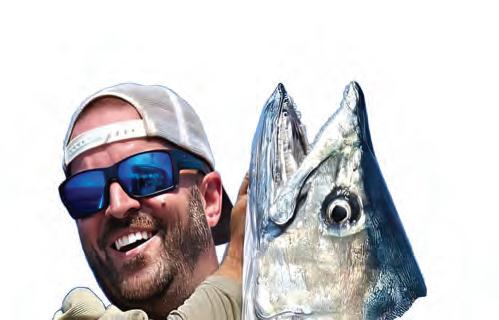

TIGHT BUDGET KINGS


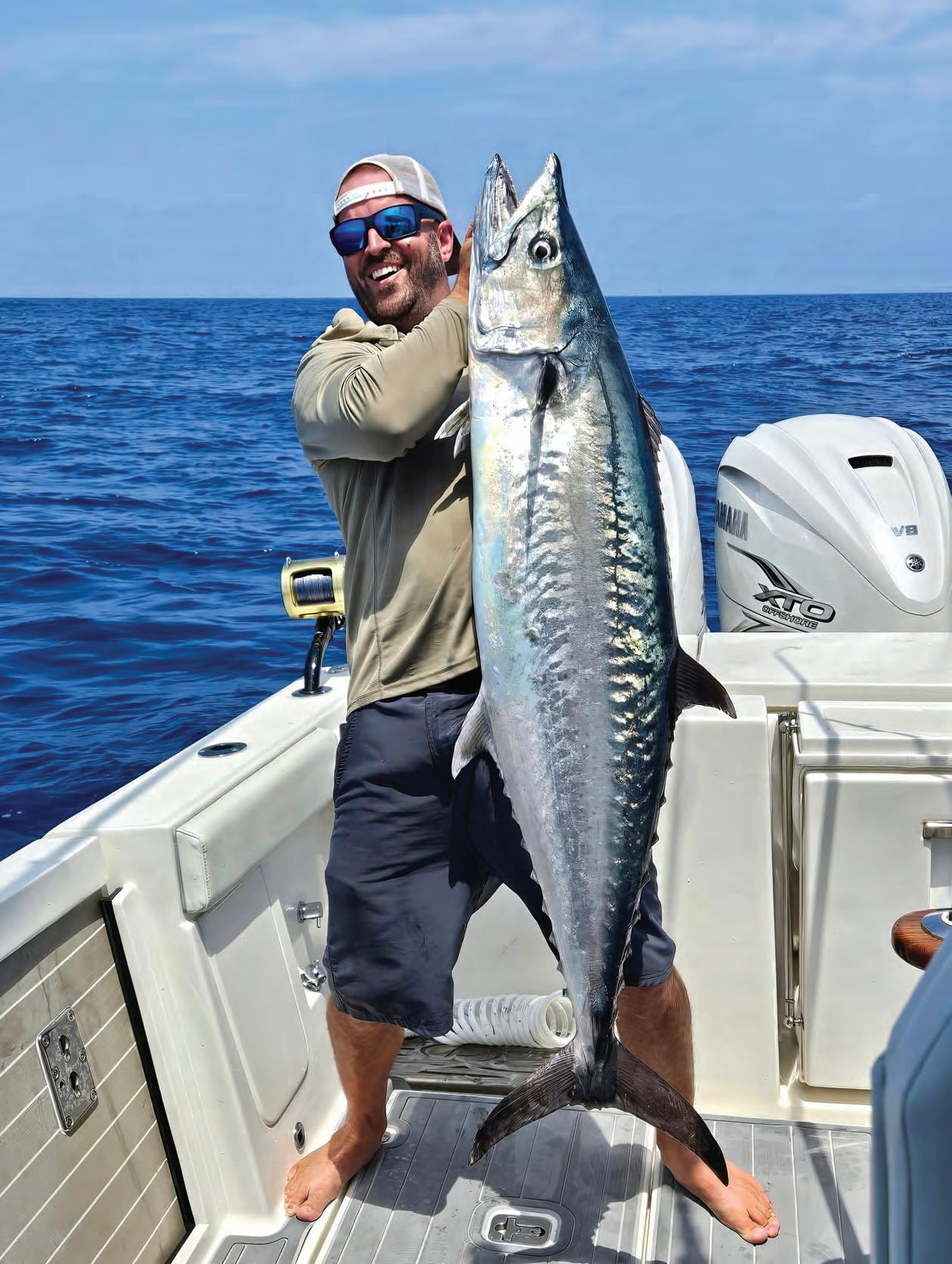


ou want new charts?
You got new charts! Explore the ocean with vibrant terrain & depth shading, using all-new TZ MAPS. Don’t just take our word for it. See for yourself. Scan here, and we’ll show you!











navigating peace of mind
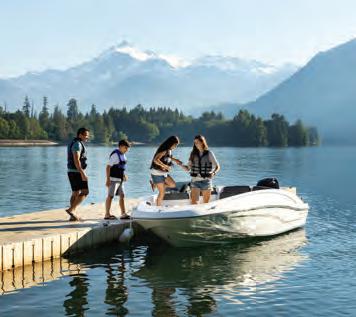






THE IMPORTANCE OF BOAT INSURANCE
Embarking on the open water is an exhilarating experience, flled with the promise of adventure and relaxation. Whether you’re a seasoned sailor or a weekend cruiser, protecting your vessel with proper insurance is not just a choice—it’s a necessity. Explore the reasons why every boat owner should prioritize boat insurance for a worry-free voyage.
Unpredictable waters
The open water can be unpredictable, with unexpected storms, collisions, or other potential accidents. Boat insurance can give you fnancial protection if there is damage to your vessel, providing coverage for repairs or replacement.
Damage and injury
Accidents on the water can result in damage to other boats, docks, or even injuries to passengers. Boat insurance offers liability coverage, which can pay for damages or injuries you’re liable for while boating, up to specifed limits, and lawsuit costs if you’re sued. This includes damage you cause to another watercraft or if someone on or near your boat is injured and you’re found to be legally responsible.
Theft and vandalism
Unfortunately, boat theft and vandalism are realities that boat owners face. Boat insurance has comprehensive and collision coverage that can protect you against events outside of your control, including theft and vandalism.
Incurred medical payments
Accidents on the water may lead to injuries for you or your passengers. Boat insurance offers a range of optional medical payments coverage limits, helping to cover medical expenses if you are in an accident or someone is hurt on your boat, regardless of fault.
Peace of mind for fnancing
If you fnanced the purchase of your boat, most lenders require insurance coverage to protect their investment. Having boat insurance not only fulflls these requirements but also gives you peace of mind knowing that your fnancial interests are safeguarded.
Navigational fexibility


Some water municipalities and marinas may require proof of insurance for docking or accessing certain areas. Boat insurance allows you the fexibility to explore different destinations without worrying about entry restrictions.
Emergency towing and assistance
Progressive boat insurance can include optional Sign & Glide® On-Water Towing coverage. If your boat is disabled or breaks down on the water, Sign & Glide® pays for on-water towing, jump starts, soft un-groundings, and fuel delivery.
Wreckage removal
If your boat sinks, Progressive boat insurance will cover the cost of removing your boat from the water (if removal is legally required).
Investing in boat insurance is not just about protecting a valuable asset; it’s about safeguarding the memories, experiences, and joy that come with your on-water adventures. Don’t let unforeseen circumstances disrupt your journey—navigate with confdence, knowing that Progressive boat insurance has you covered. Ensure a smooth and worry-free voyage, because when it comes to your boat, peace of mind is the ultimate luxury.
Scan to get a quote in as little as 4 minutes
learn more.




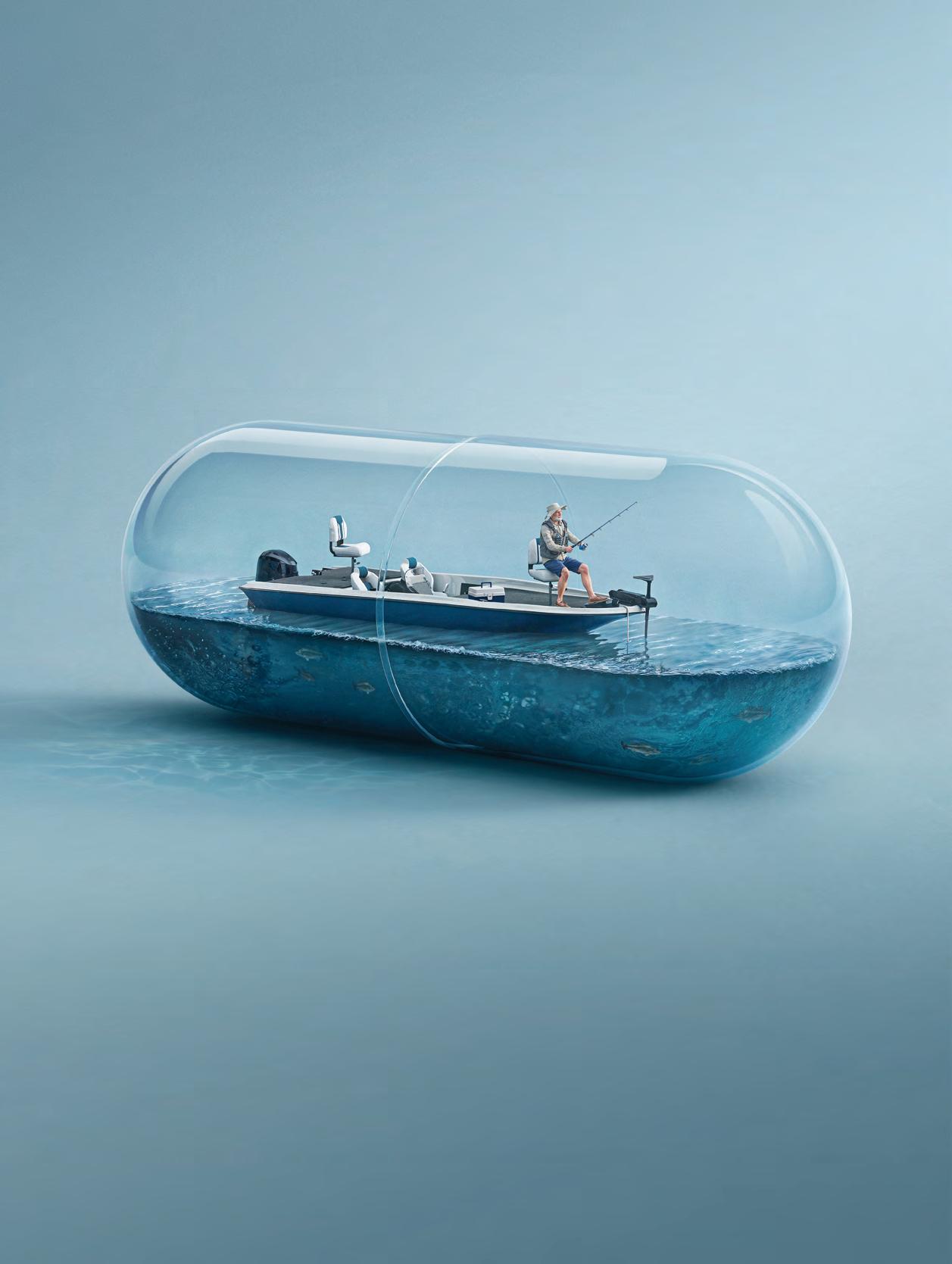
















FATHER’S DAY: THE PERFECT TIME TO FISH WITH YOUR KIDS
THATCH MAGUIRE, EDITOR AT LARGE
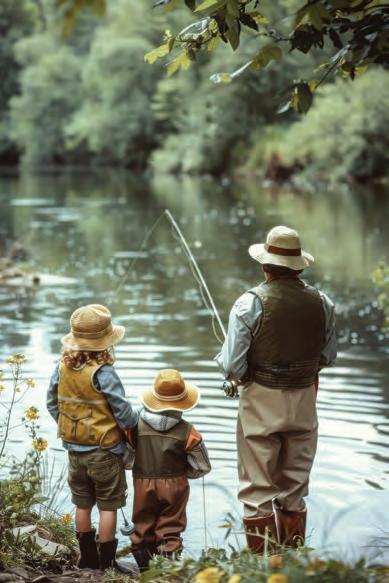
Father’s Day is one of the best opportunities to take your kid !shing.
It’s a celebration of the powerful bond forged when dads pass down the timehonored tradition of !shing, a tradition that stretches back thousands of years. While !shing once put food on the table out of necessity, today it still feeds something deep within us. at ancient connection to the water lives on in every angler, whether they realize it or not.
Inviting your son or daughter to !sh on Father’s Day regardless of their age makes a timeless statement. It bridges distance, mends di erences, and rea rms love in a way few other gestures can. Even if the day ends without a single bite, the act of !shing together creates a bond that words can’t express. It’s not about the catch. It’s about the connection.
ere are countless lessons a father might teach a child, but carving out time to share a quiet day on the water—free from the noise and distractions of modern life is one of the most meaningful. By saying, “Let’s !sh together today,” you’re also saying, “Let me share who I am with you.” And that’s a gi no one forgets.
Don’t have a son or daughter? No problem. Take any kid !shing this Father’s Day. Whether it’s a neighbor, a niece or nephew, or a friend’s child, the impact is the same. You’re passing on something real, something rooted in tradition, and something that could change a young life forever.
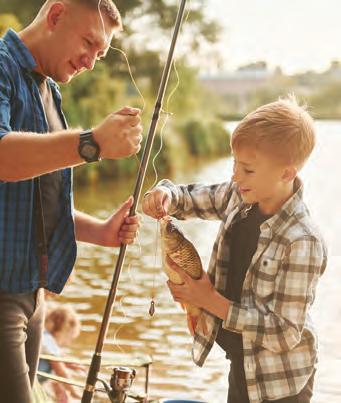
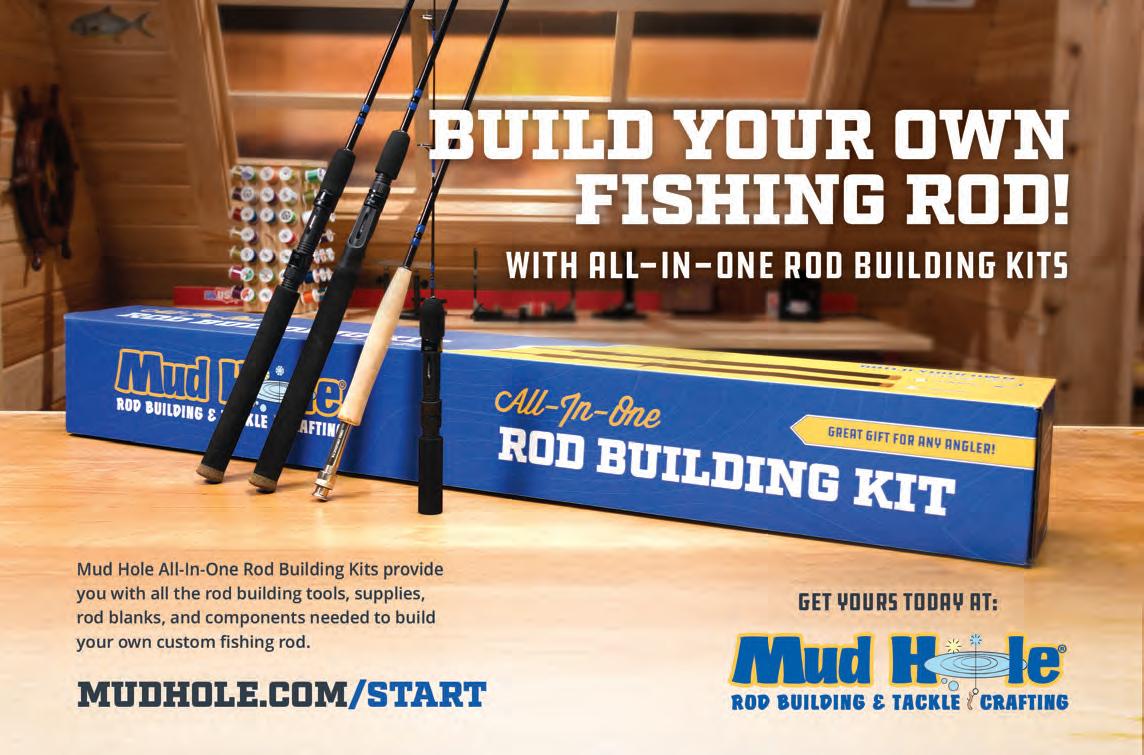

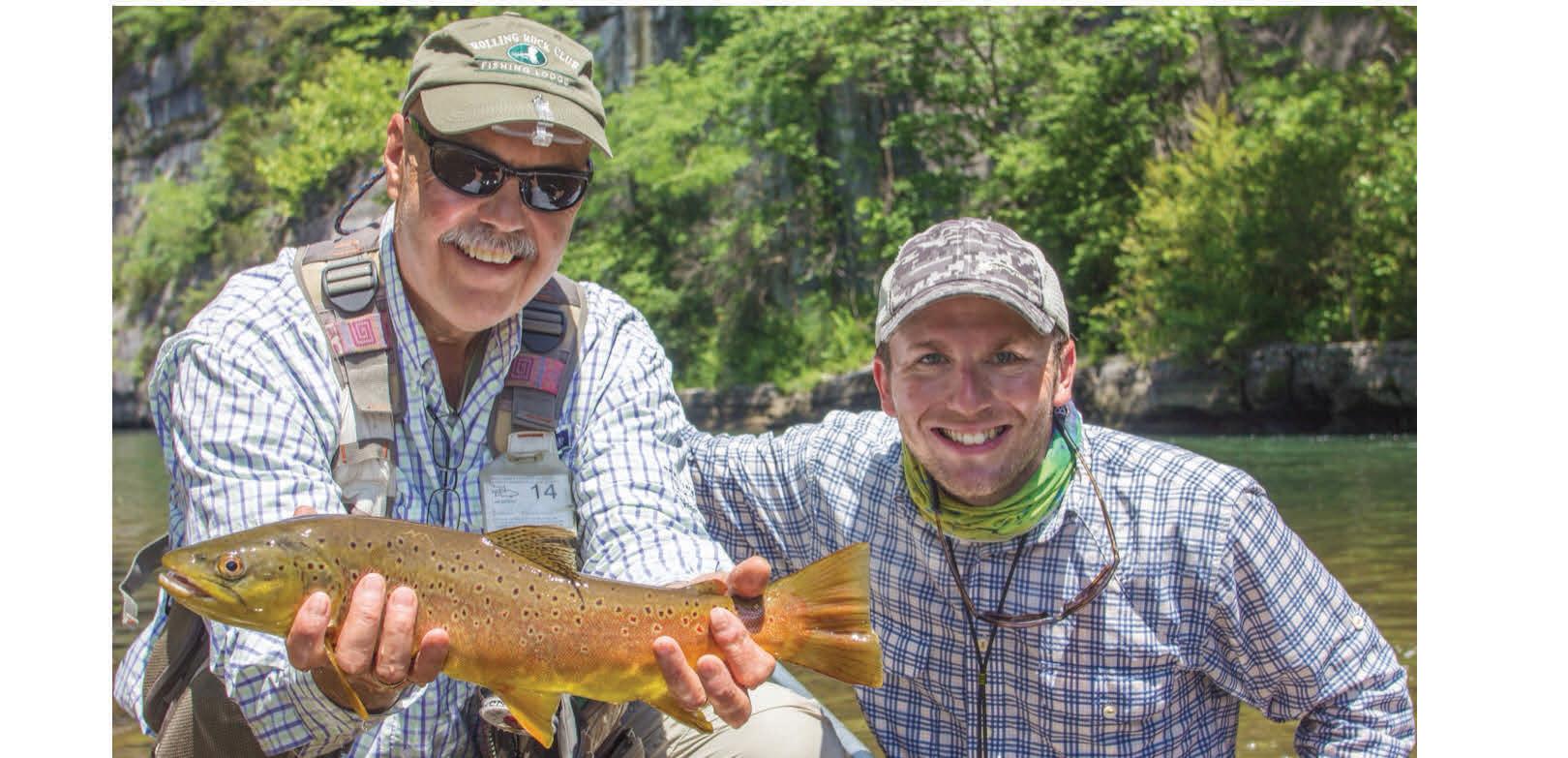






KINGFISHING
ON A SHOESTRING BUDGET
By Capt. Steve ompson
Targeting king!sh during their annual migration season o Florida’s east coast is a predictable event that coincides with the annual migration patterns of the Atlantic stock of king!sh. During the summer, anytime from midMay through August, when the water is warm enough for the kings to stick around, we all have a great chance of catching a tournament class king!sh, at almost anyplace we decide to !sh.
King!sh can be caught anywhere from the mouth of an inlet, on out to 200 foot depths, and that means that almost any seaworthy vessel can, and does, go a er these !sh during the “mostly calm” summer days.
Everyone has heard about the GJKT tournament winner that Fred Morrow caught at the tips of the north rocks, or Bob Johnson on his Traveler who won the aggregate, with two nice !sh, also right o the beach. What do these teams have in common? ey won in small boats with very little overhead, with very short runs to their !shing grounds. But they did their homework and had a plan, and went straight to where they were going to !sh. Because let’s face it, the small boater isn’t going to run all over the ocean chasing !sh that have already been caught. And those are not the only examples, this same scenario takes place every year
in tournaments up and down the Atlantic coast.
Another way to !sh on a budget is to not get caught up in the latest and greatest gear. Sure, you need quality equipment, but one can good used reels from friends, who are upgrading, or from yard sales or even at swap meets at your local o shore club.

As far as rods go, if you know what “feel” you like on your rods, you can !nd o name rods at sidewalk tent sales at your local tackle store, that perform as well as a custom rod, for a fraction of the cost!
To avoid buying that expensive bait, become pro!cient with a cast net! Kings get fat and happy on a steady diet of “pogies”, or menhaden found along our beaches. You need a heavy fast sinking net to have all the bait you want for a day’s !shing. No pogies, you say? Don’t worry, many king!sh over the years, have fallen to other baits than just a pogy. A pound of shrimp on tournament day could very well be a day saver. Croakers are great king baits, as well as blue runners and blue!sh. Ribbon!sh can also be used but are best caught a few days before and brined so they are easily trolled. If you like !shing the Party Grounds always have some sabikis on board. ese are small feathers on small hooks on a special rig that will catch fresh sardines and cigar minnows on most of the o shore reefs and wrecks.
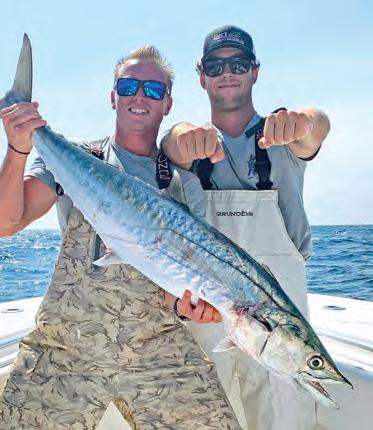
Don’t be intimidated when you sign up to !sh any tournament. You have the same chance to catch a tournament winning king!sh as the next guy. And you do not have to drop big bucks to do so. Just do your homework, pre-!sh as much as possible and, come tournament day, have a plan and stick to it…and we’ll see you at the weigh scales!
Capt. Steve ompson is Chairman of Jacksonville Marine Charities / Greater Jacksonville King sh Tournament and a 40-year successful veteran of competitive king sh tournaments all over the Southeast. Contact him at (904) 251-3011 or email: gjkt@king shtournament.com.
Command The Water With Lowrance & Simrad
Whether you’re chasing trophy fish or charting your next offshore course, your time on the water deserves the best in navigation and marine technology. Defender brings you UNBEATABLE PRICES and EXPERT SUPPORT on Lowrance and Simrad electronics—trusted by professionals and weekend warriors alike.


The choice for powerboaters and sportfishers. Get crystal-clear sonar, radar, and navigation that keeps you locked on target.


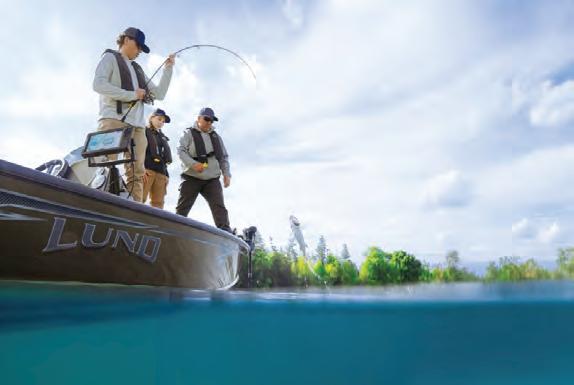





–– George Thomas, Noted watchmaker & historian

Greenlight to A Deep Dive Without Going in the Red


Every year in Basel, Switzerland, the world’s best-known luxury watchmakers gather to display their new timepieces. It’s a great event for spotting timepieces that standout–– in performance and in personality. We saw one impossible to ignore: a precision dive watch with an arresting green dial. But we also saw the five-figure price tag and knew we could bring our customers that exact same precision and stand out appeal for a whole lot less. The Stauer Evergreen Diver is that timepiece.
Built like a submersible battleship with a stainless steel case, caseback, and band, the Evergreen Diver is water-resistant down to 660 feet or 20 atmospheres, a feat facilitated by a hardened crystal and screw-down crown.
Green On Your Wrist AND In Your Pocket. You could pay an awful lot elsewhere for this verdant virtuoso, but the majority of the cost is in the big designer name upcharge. We think those guys are all wet. This is how you own a top-of-the-line dive watch without helping pay for some marketing guy’s yacht.


Satisfaction Guaranteed or Your Money Back. Wear the Evergreen Diver for 30 days. If you’re not completely happy, send it back for a full refund of the item price.
Limited Reserve. A watch of this caliber, with a price that won’t drag you under, takes 6 months to create and won’t stick around for long. Call today!


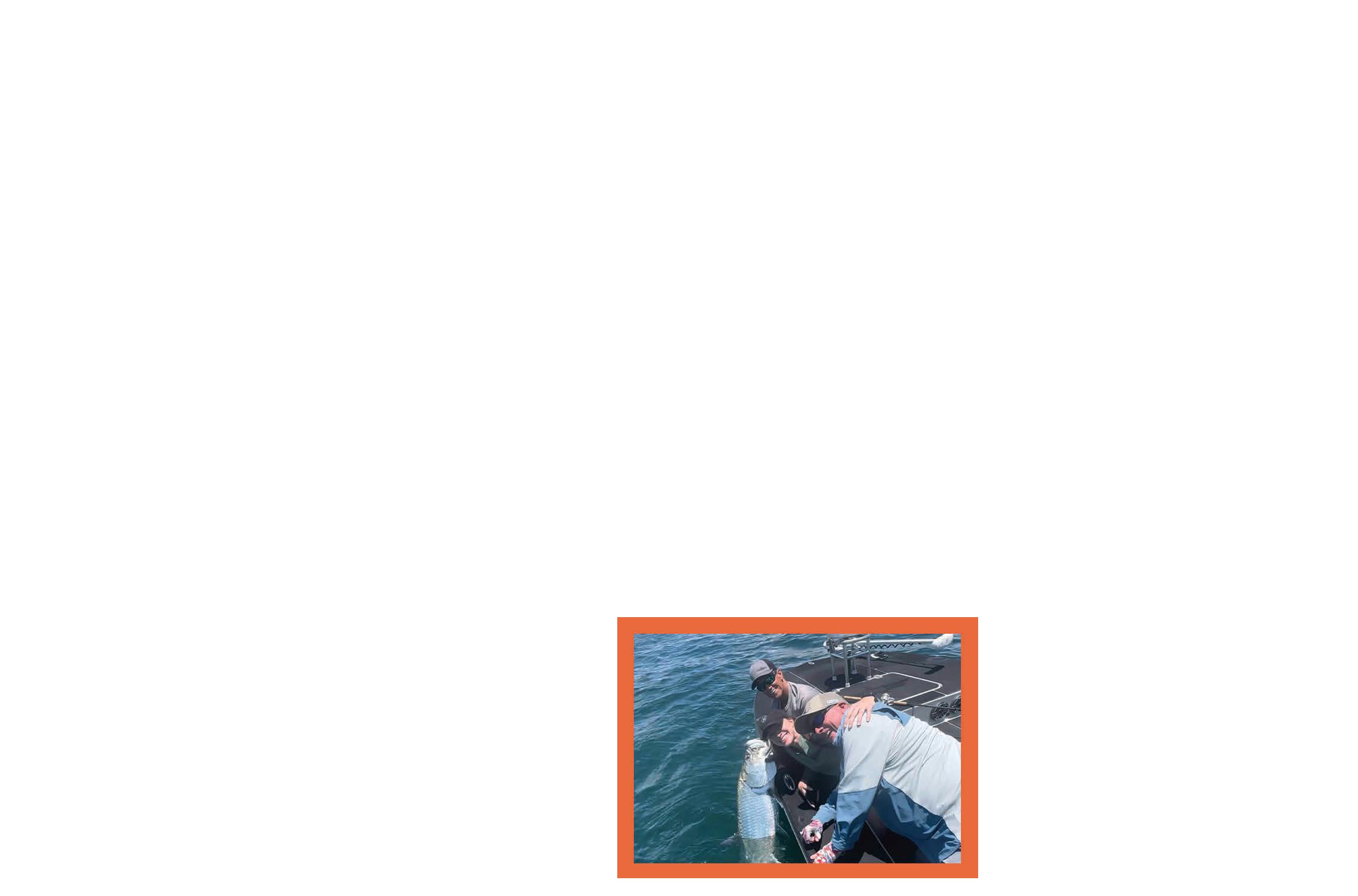
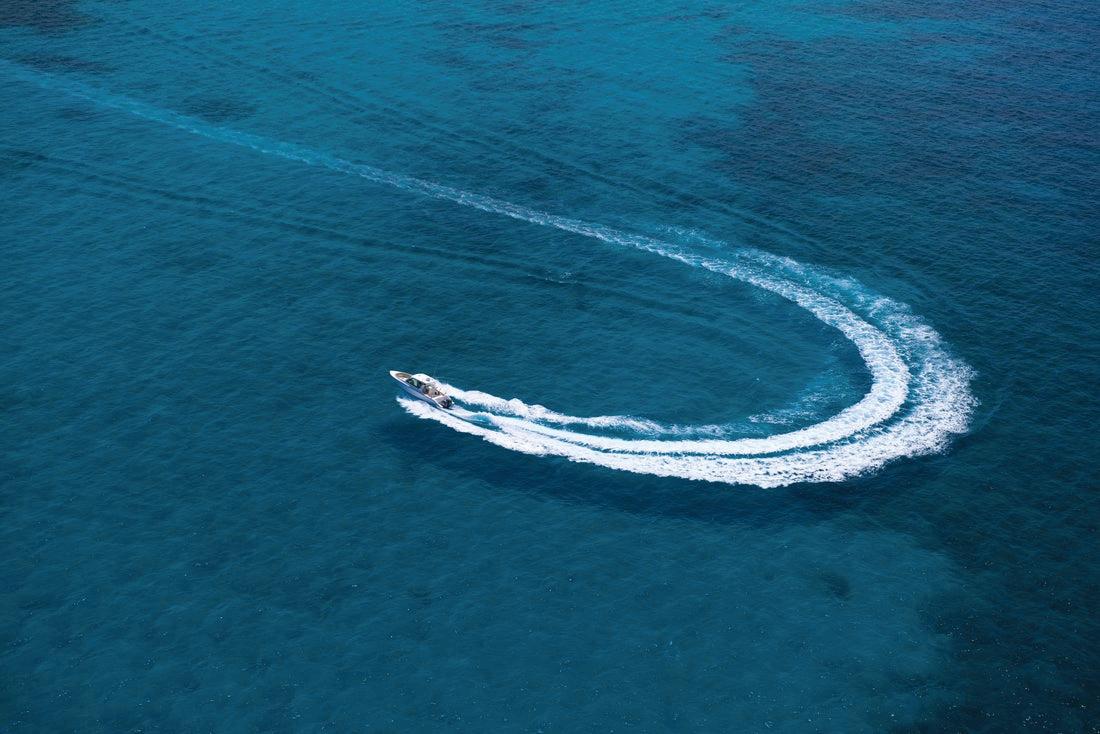
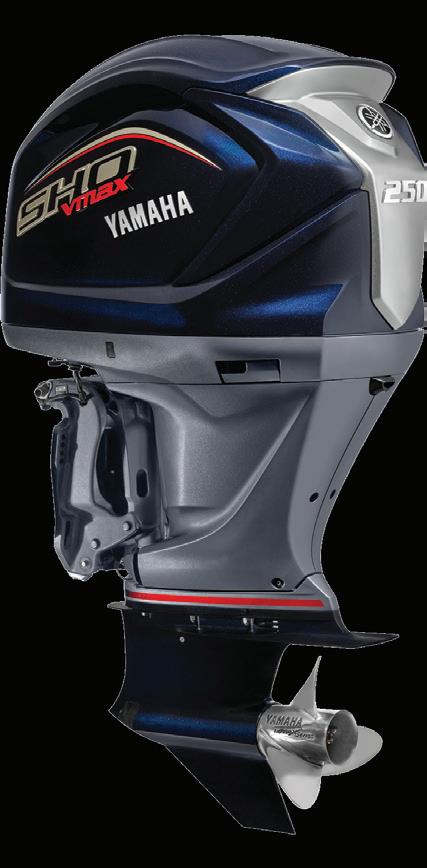
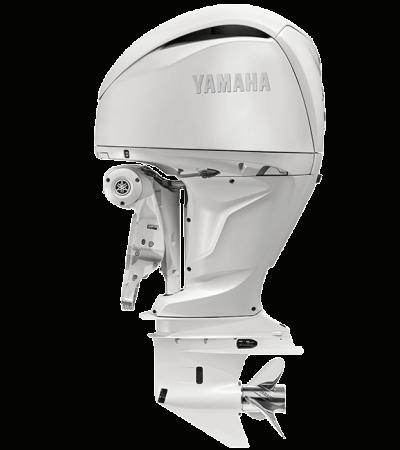

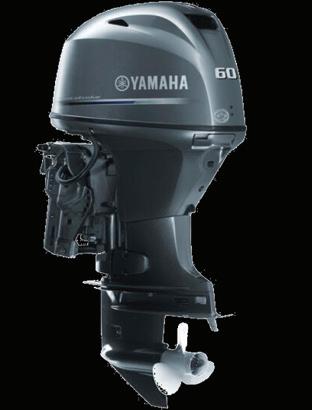
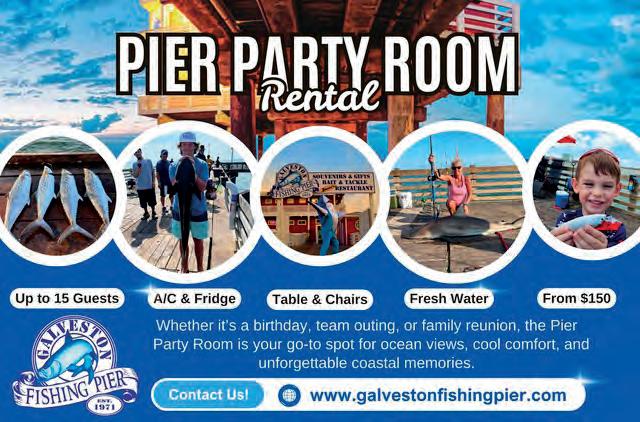




Jamaica Beach, West Bay, TX - Jun 2025
1 Sun 2:22 1.0 6:20 0.0 6:18 8:15
2 Mon 2:50 0.9 7:23 0.1 11:11 0.6 6:18 8:16
3 Tue 12:45 0.7 3:05 0.9 8:35 0.3 11:16 0.5 6:18 8:16
4 Wed 3:22 0.7 3:13 0.8 10:01 0.5 11:32 0.3 6:18 8:17
5 Thu 5:24 0.8 3:15 0.8 11:33 0.7 11:50 0.1 6:18 8:17
6 Fri 6:46 0.9 3:11 0.8 1:03 0.8 6:17 8:18
7
8 Sun 8:12 1.1 12:29 -0.1 6:17 8:18 9















15
16
18
19 Thu 2:19 0.6 1:44 0.8 7:40 0.5 9:53 0.1 6:18 8:22
20
21 Sat 5:59 1.0 1:29 0.9 11:51 0.9 11:13 -0.3 6:19 8:23
22 Sun 7:03 1.1 11:58 -0.5 6:19 8:23
23 Mon 7:56 1.2 6:19 8:23
24 Tue 8:47 1.2 12:47 -0.6 6:19 8:23
25 Wed 9:38 1.2 1:37 -0.6 6:20 8:23
26 Thu 10:28 1.1 2:28 -0.6 6:20 8:23
27 Fri 11:18 1.1 3:20 -0.5 6:20 8:23
28 Sat 12:02 1.0 4:09 -0.4 6:21 8:24
29 Sun 12:35 0.9 4:57 -0.2 6:21 8:24
30 Mon 12:58P 0.8 10:47 0.6 5:42 0.0 9:17 0.6 6:21 8:24
















www.USHarbors.com Eagle Point, Galveston Bay, TX - Jun 2025

1
2
4
5
3 Tue 4:33 1.0 7:48 0.4 11:44










6:17 8:21
12 Thu 1:53 1.3 2:02 -0.2 6:17 8:21 13 Fri 2:47 1.3 2:50 -0.2 6:17 8:21 14 Sat 3:25 1.3 3:39 -0.2 6:18 8:22 15 Sun 3:47 1.2 4:26 -0.2 6:18 8:22 16 Mon 3:50 1.1 5:11 0.0 6:18 8:22 17 Tue 3:21 1.0 5:57 0.1 6:18 8:23 18


















29


































































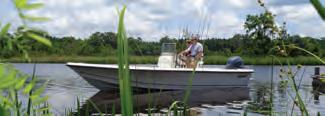


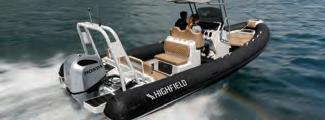






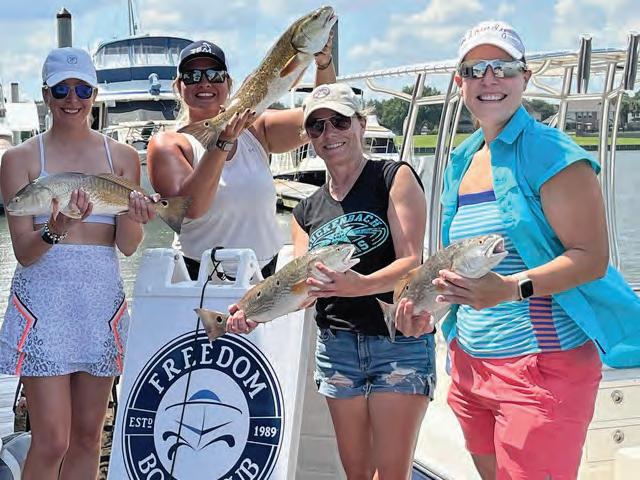
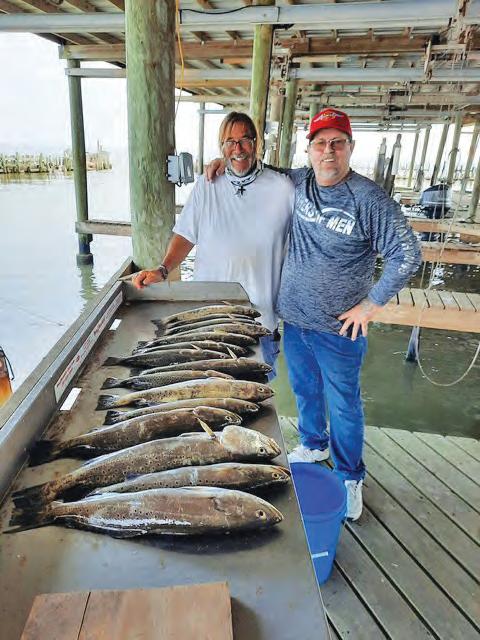
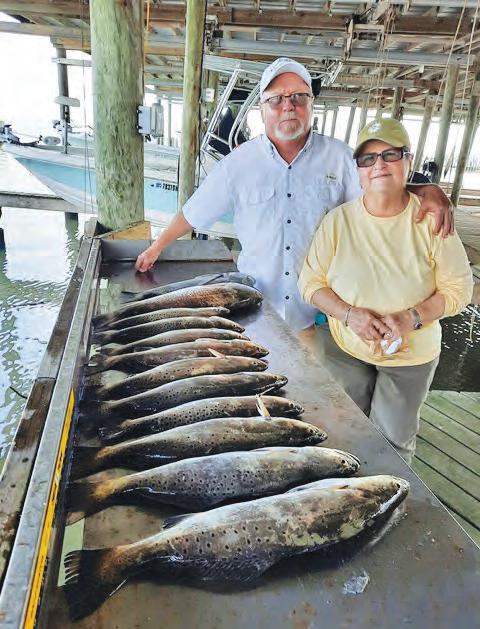
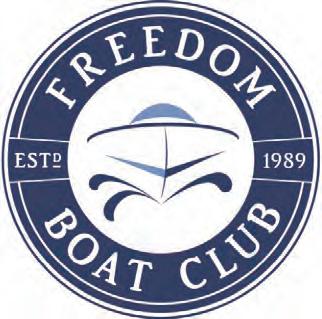
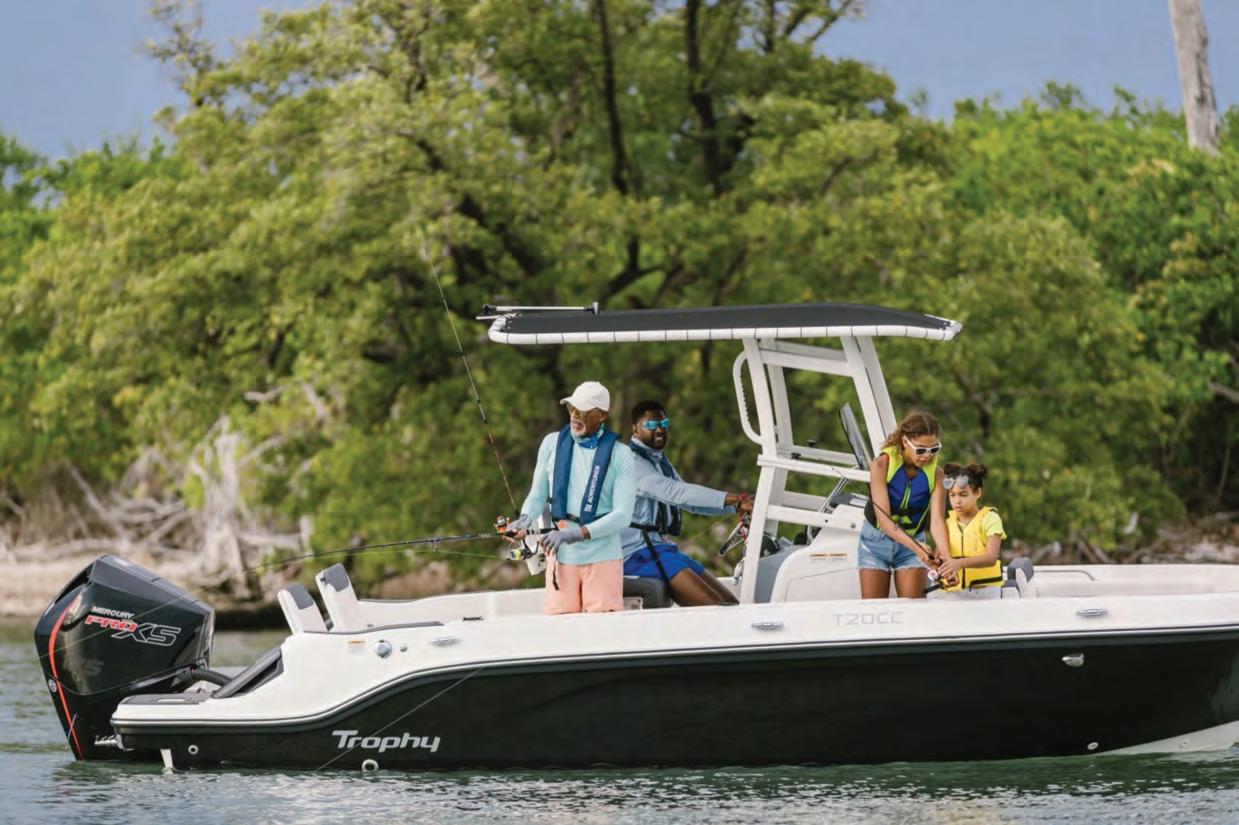


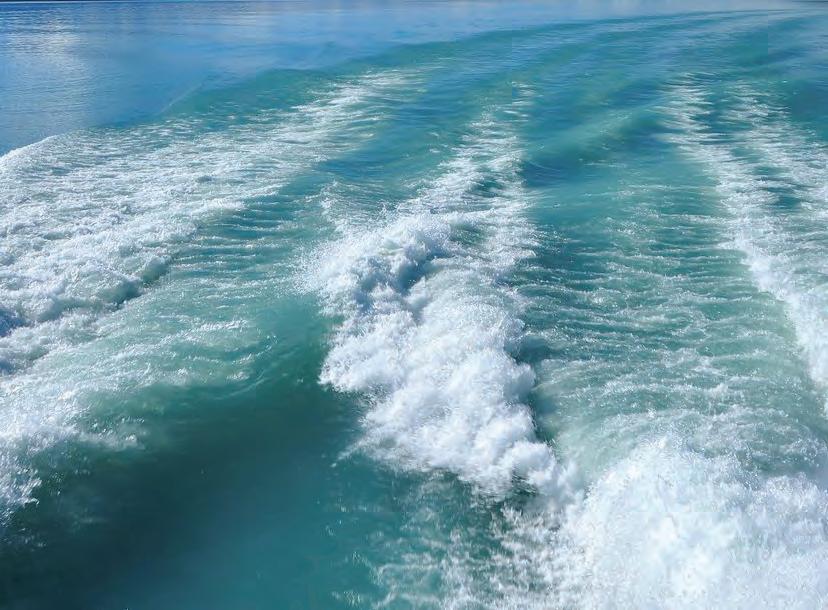







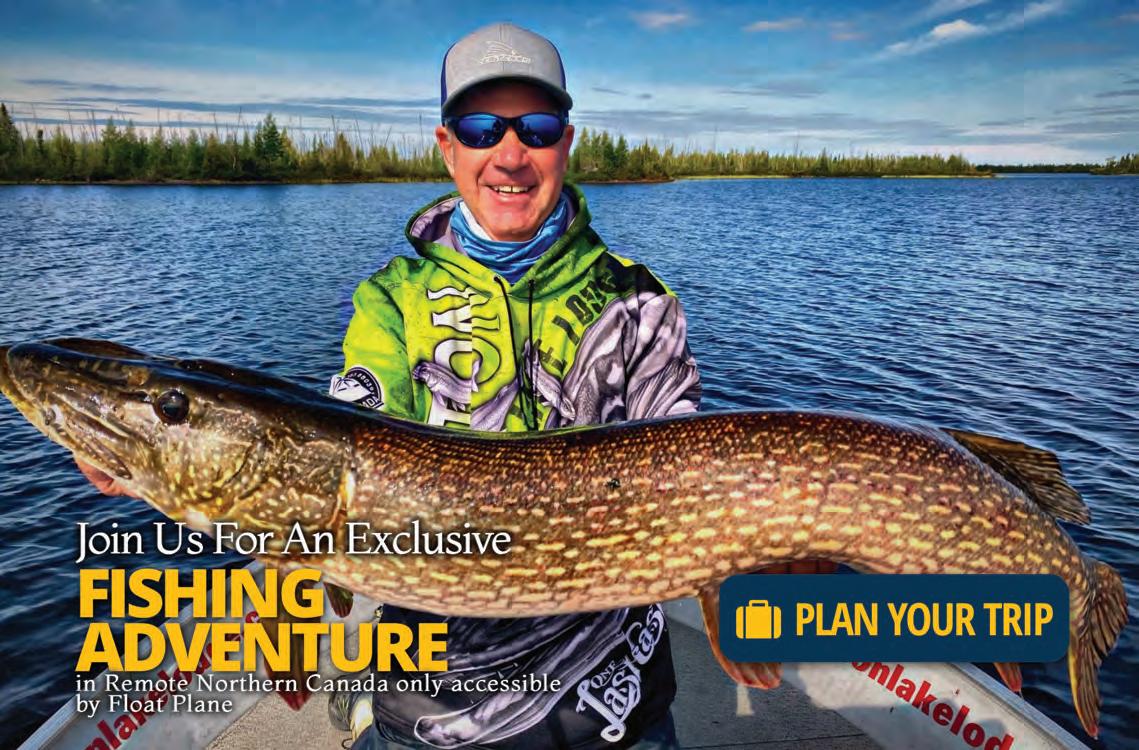




Popping Corks & Kiddos: A June Fishing Tradition
Second: skip the loop knot for your cork and hook. Loop knots are excellent—just not here. They add slack where you don’t need it, and with junior anglers on deck, less slack means fewer tangles and missed fish.
What are the best parts of June? School’s out, the days are long, and I get to hit the water more often with my boys. It’s become a tradition in our family: pack the cooler, grab the rods, and head out chasing tails under the summer sun. Our not-so-secret weapon? The always-reliable popping cork.
Now, I won’t try to name every cork on the market (we’d be here till next June), but I’ll share our go-to setup and a few tips to help make your next trip smoother—especially if you’ve got little anglers in tow.
Let’s talk bait. Live shrimp is our MVP, but dead bait and lures get their time to shine too. Lures tend to keep the “bait bandits” away, but if it’s a slow bite, those pesky nibblers become the stars of the show. My kids think a croaker on the line is just as thrilling as a redfish.
We often drift or anchor near structure when there’s bait flickering around. Drifting can be tricky with kids who haven’t mastered the long cast or slack control. Two tricks help here. First: the circle hook. It sets itself (less work for little hands) and does minimal damage if you need to release your catch. Plus, in the chaos of a drifting boat, it’s more forgiving when someone forgets to keep tension on the line.
Now to the main event: the cork itself. After decades of experimenting, I’ve fallen for a newer model—a hard plastic, deep-cup, rattling, popping cork. It’s heavy enough for my boys to cast like champs, even into a headwind. No wires, no wind tangle nightmares, and it flies like a bullet. The built-in rattles add the right commotion to call fish in without scaring them off. And that deep cup? It creates that irresistible slurp-splash sound with almost no effort. Perfect for young anglers still figuring out the rhythm.
One last tip—transport like a pro. Most folks clip the hook low and let the cork bounce up top, flopping around and waiting to poke someone. I reverse it: secure the cork down by the reel, wrap the leader around the handle, and clip the hook up high. No flex, no loose hooks, no surprise piercings.
So grab a few snacks, load up the boat, and hit the water. June’s waiting—and the popping cork’s ready to work its magic.
Capt. Michael Okruhlik is the inventor of Knockin Tail Lures®, and the owner of www.MyCoastOutdoors.com.
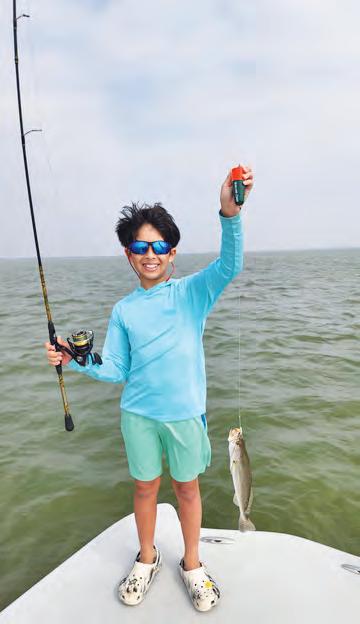
Photo courtesy of Knockin Tail Lures®
Wear That Kill Switch, Hurricane Season 2025
CAPT. DAVID C DILLMAN
832-228-8012
galvestonbaycharterfishing.com
Are you wearing your kill switch? I ask this for an important reason. Most of us by now know it’s a law, but are you really attaching it to yourself, while under power. Right before Mother’s Day weekend of 2022, a friend of mine called, and said, “I’m going to Lake Calcasieu in Louisiana.” He was leaving early that Friday morning and his girlfriend was meeting him later that afternoon. They planned on staying there over the weekend.” That plan all got changed, when he was found laying face down in West Cove Friday morning, as the boat circled him. Once the game wardens arrived, he was pronounced dead at the scene. We spoke Thursday night, prior to him leaving, and as usual we ended the conversation with the words I love you.
Speaking of loss, another active hurricane season is in the forecast. I’m fairly certain we all can remember hurricane Beryl from last year. That category 1 storm at landfall wreaked havoc on the coast and inland areas. Were you prepared? Here is a simple checklist of supplies, you should have immediately available this season.
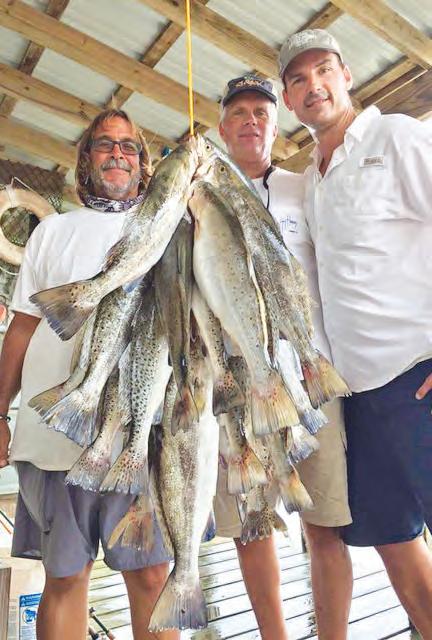
1. Flashlights and extra batteries
2. Candles
3. Water
4. Non-perishable food
5. Prescription medicine needed
6. First aid kit
7. Pet food/supplies
8. Blankets/sheets/pillow
9. Ditch Bag containing clothes, insurance papers, expensive jewelry, toiletries etc...
10. Cash!
11. Written evacuation plan
12. Plywood! If needed.
Everybody’s needs are different, this is just something to go by, pass it along to your neighbors and friends.
The so-called forecast experts, have no idea, where they’ll make landfall. Taking precautions now, will lessen the stress and anxiety associated with a coming storm. First and foremost, take care of your personal property and your family first, your employer can wait, unless you are on the front line. Remember, run from the water, hide from the wind!
Overall catches in Galveston Bay have been good. Plenty of speckled trout are being caught, in every bay system, and on a variety of baits. Barring any type of weather system in the gulf, June should be a great month, both inshore and offshore, as red snapper season opens.
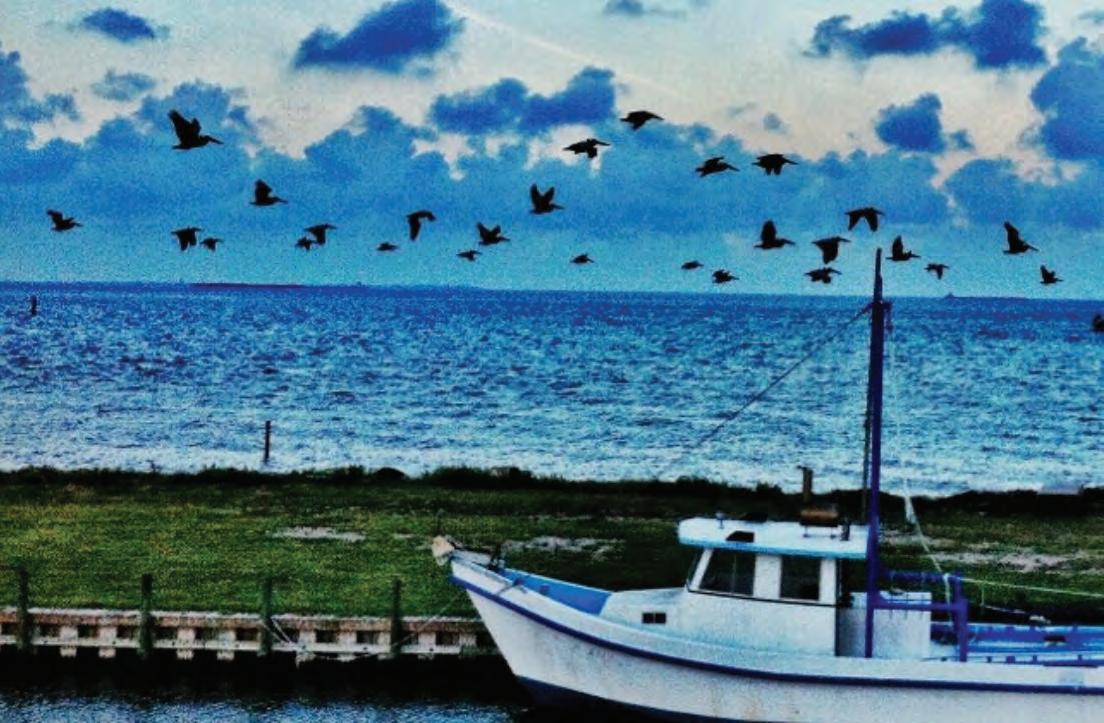
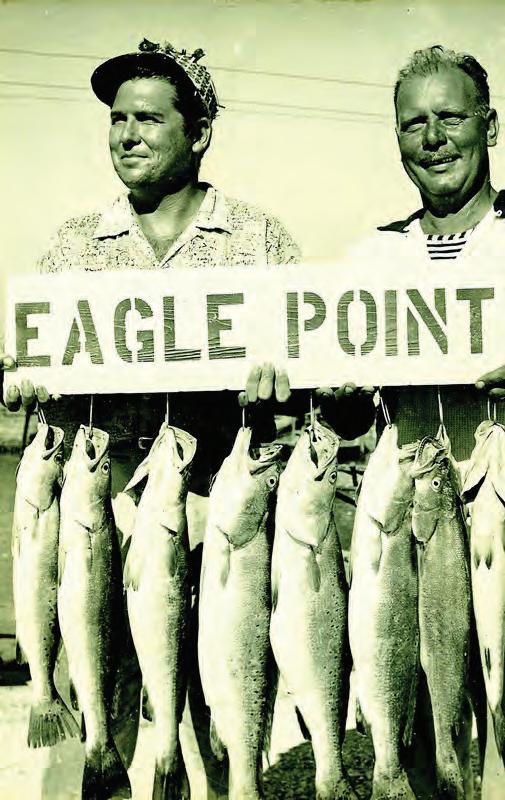
Best Bait on Galveston Bay since 1929
What’s made Eagle Point Fishing Camp unique since 1929 is its location and business model. Because it’s in the center of the Galveston Bay, EPFC allows anglers to conveniently fish a vast stretch of water spanning from Houston to Galveston. Using the same full-service concept as its date of establishment, EPFC has proven for nearly a century that easy access to the water combined with a skilled staff creates the perfect fishing experience. Along with the boat ramp, boat storage, live bait for purchase, tackle shop, and RV park, EPFC has always had a fleet of shrimp boats to supply the bait that so many of their regular customers desire. Their successful commercial shrimping business has been an intricate part of what makes EPFC unique.
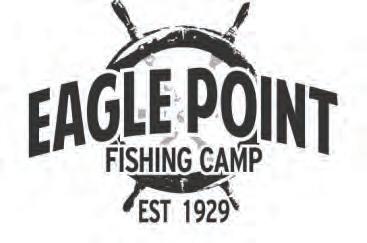

LEARN THE SECETS OF SALTWATER FISHING




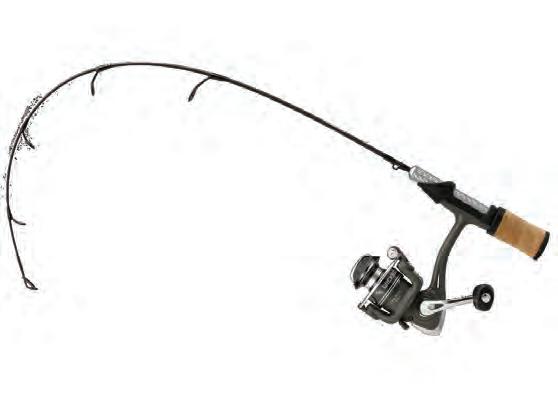




Artificial Lures Provide for Quality Fishing
CAPT PAUL MARCACCIO
T.P. & W. & USCG License
Marcaccio Fishing Academy
captpaul@gofishgalveston.com www.gofishgalveston.com
the artificial. Most agree that artificial colors are made to catch fishermen, not the fish you target. There are too many manufacturing lure companies, but will tell you the ones that this writer uses. Salt Water Assassins, Mirrolure, Stanley Jigs, Norton Sand Ells, and Johnson Sprite Spoons. Gulp by Berkley, has really been a key to saltwater catching when sometimes the above does not work.
artificial lures. When it comes to wade fishing, I fish with soft plastics and top waters. Also, that includes gold spoons. However, there have been times when anglers have stood toe-to-toe with me using live bait. I take a back seat to those anglers on those days, as live bait will out-catch my artificial lures. As a young man growing up in Galveston, I always used live bait. The bait back then, some 50 years ago, consisted of live shrimp, live mullet or cut bait. Dixie spoons worked wonders on those sow trout. We caught a lot of fish back then, but I really think it was because the fish were so plentiful. We were good fishermen, but there were a lot of fish to be caught. In the early 50’ and 60’, we could sell our speckled trout @ the market for 12 to 15 cents a pound.
Regardless of the species we caught, most of the fish were school size. Remember that we had no size or bag limit. We caught and kept a lot of fish in the 12” to 15” range, There were times when we caught trophy-size fish, but there wasn’t a great deal of fanfare then as compared to today. Catching big fish was commonplace. We all knew the smaller fish were better tasting, and we could always find the trophy fish with little or no effort…………………
I became a serious lure fisherman over 40 years ago while starting my guide service. There were many times when I contemplated switching back to natural bait. But, competition among myself and other guides along the Gulf Coast forced me to stick it out until my confidence with the artificials was strong enough and I had begun to consistently catch those fish with
In order to be successful with lures, you have to be persistent. Fish are in the water within casting distance around you, but don’t simply make a few casts and expect success. Fish will often trail a lure without striking until they see your shadow or that of your boat in the water.
Fishing out every cast means working and imparting action in the lure through the entire retrieve. A lure at rest on the bottom or floating on the surface won’t normally land you the strike desired.
The key to successful saltwater fishing with a lure is to thoroughly work all of the water within the casting range. If you only make a dozen or so casts and then move up or down the shoreline or surf, you just might be leaving the area about the time the fish pick up the lure vibrations in the water and start homing in on that area. I have been successful while, during the course of a morning, I have moved less than a mile from my original spot, all the while catching good fish.
Fish can only move in on lures when they have picked up the vibrations of the lures moving back and forth, or when the lures catch their attention. Remember, light colors in clear waters and dark colors in off-colored water. If you have patience and are persistent, then by all means, take a serious look at fishing artificial lures. But, if you have trouble paying attention to your fishing, then stick with natural baits. If you opt for the latter, keep in mind that you’re going to miss out on a lot of trophy-size fish.
It’s your game. You make the call.
As always good luck and have fun outdoors
See y’all on Galveston Bay.
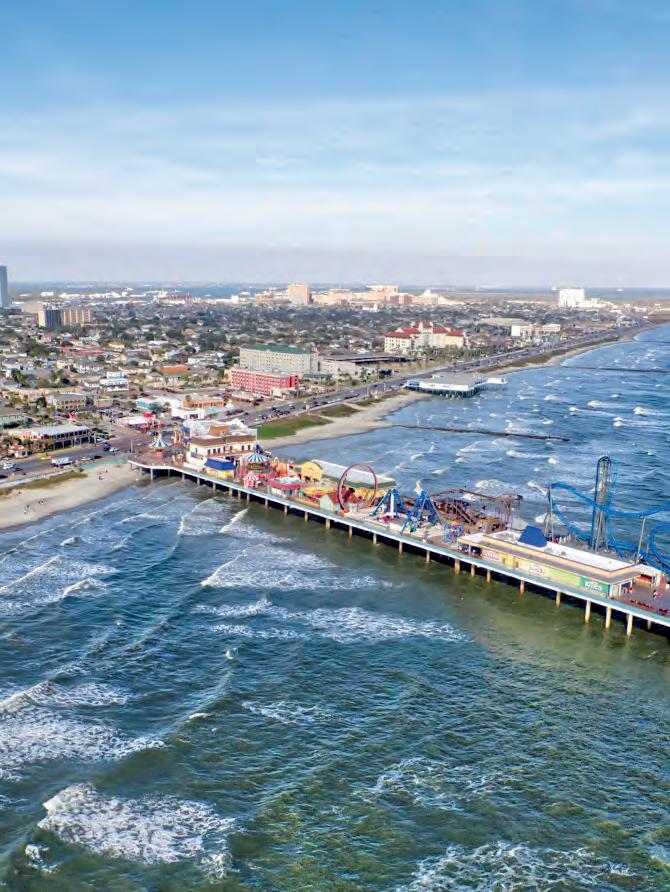
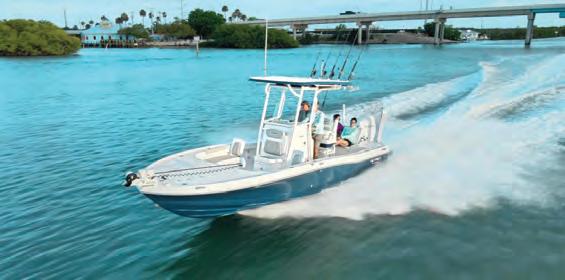




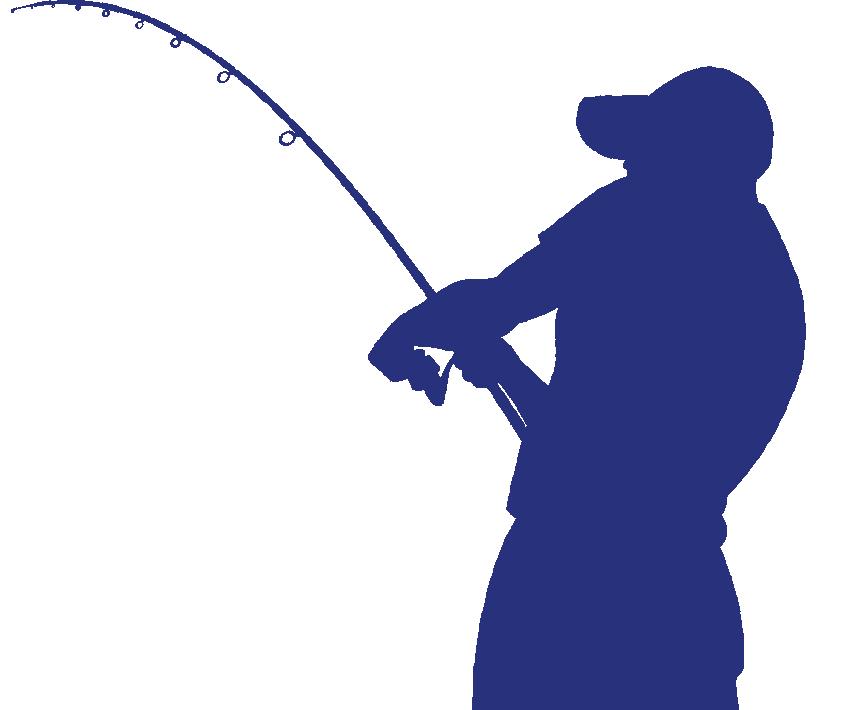









GO DEEP(ER)
Tim Barefoot
I’ve written quite a few articles on the tactics I used to catch grouper on the edge and inside the edge with bait in a decoy jig in the past, but now is a good time to push out a little further to see what’s up in the 350 to 500+ foot depth range. !is type shing may require you to change gears on your thought process and/or tackle, but you may be pleasantly surprised with the results.
First o , you will want to use a spinning rod with backbone and a lighter braided line. I’m not going to suggest any tackle manufacturer for rod, reel or line, but the line in the jig is the most important part of this equation. I know this sounds crazy, but you can get away with braid, a small is 20 pound test connected to a short 6-foot shot of uorocarbon leader, and catch the big boys from the deep. When you sh ledges, wrecks and rock homes, you have to use heavier tackle to coerse the grouper and big snapper out of the structure, but in the deep the sh tend to congregate around bait, and there is very little structure out there for them to get you in. !e bait out there consists primarily of squid—the universal bait for all the seven seas of this planet, period. Squid are present at all depths, from the surface at night to their migration back to the deep by day; just ask any sword sh. Ha!
!is deeper water shing may also require a change in electronics. In order to mark the sh and bait you need to have enough power to send the signal and

get a return. You can run all over creation trying to mark sh or bait in vast areas of water, but having the correct electronics will assist in this greatly. Once you start marking the blue-speckled screen on the bottom, you know you’re in squid. I’ve always said it, but when you nd the bait you found the sh. Once you mark the bait, more than likely, it will be squid and it’ll be time to drop in the correct jig.
I’ve made several videos using the 4 ounce (so plastic) Squid Jig, but I’ve also had a 6 oz. size made. A 10 inch mold cra ed squid, trimmed properly, can be very e ective at times. Fish like a champ on the 6 ounce headed down deep. !e jig stays perfectly horizontal and jumps like the 4 ounce, and everything down there sucks it up. I’ll be publishing videos soon on this.
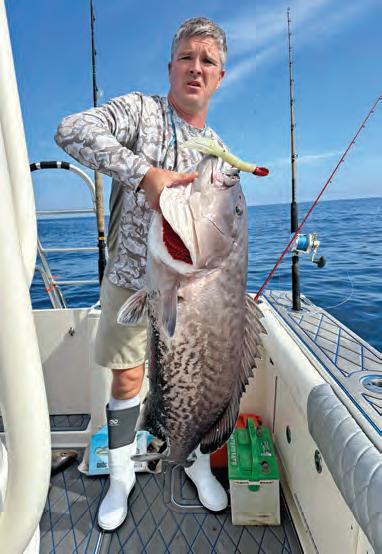
I’ll close with this: nd the bait and you’ll nd the sh...using the correct electronics. Once you nd the bait/ sh, drop in the correct jig that imitates what they eat on a daily basis and you’ll get the bite. And one more very important note. Pay close attention to the MPAs, which are marine protected areas, and seasons you can sh in them. You need to be well informed of where you are when you nish shing and what you could put in the cooler. You have to play by the rules.
Check out Tim Barefoot’s YouTube channel and website, barefootcatsandtackle.com.
CAST LURES IN A MITZI TOURNAMENT 17
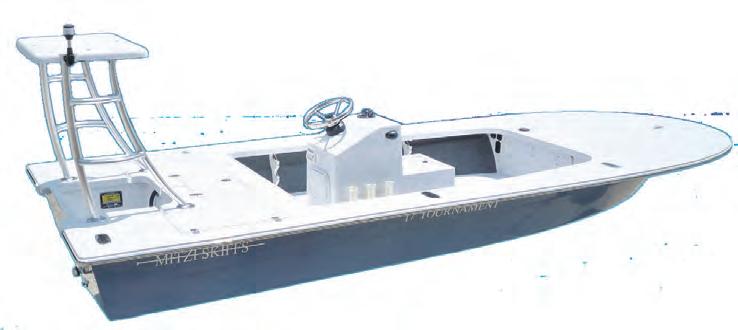

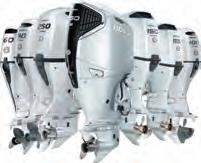
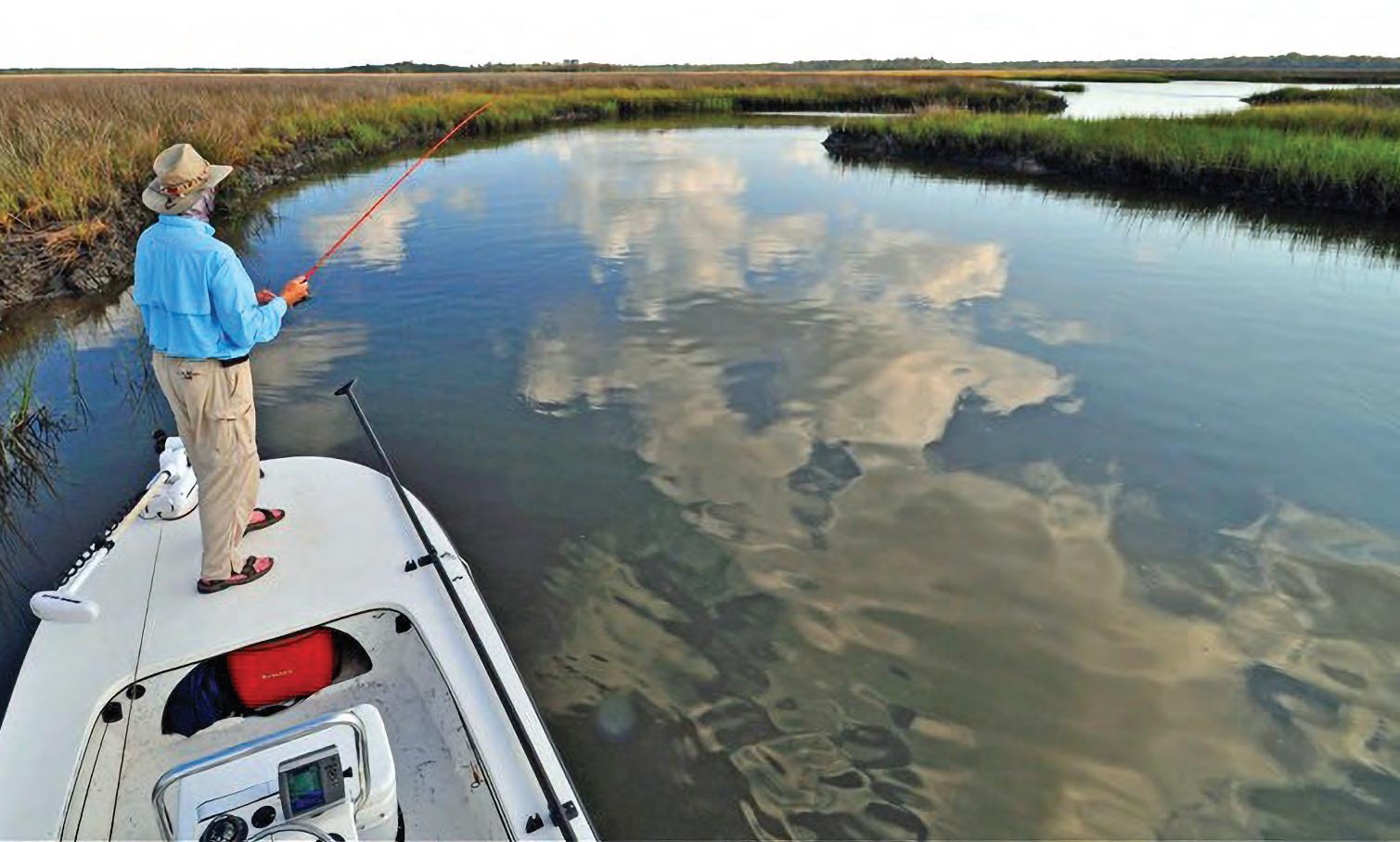
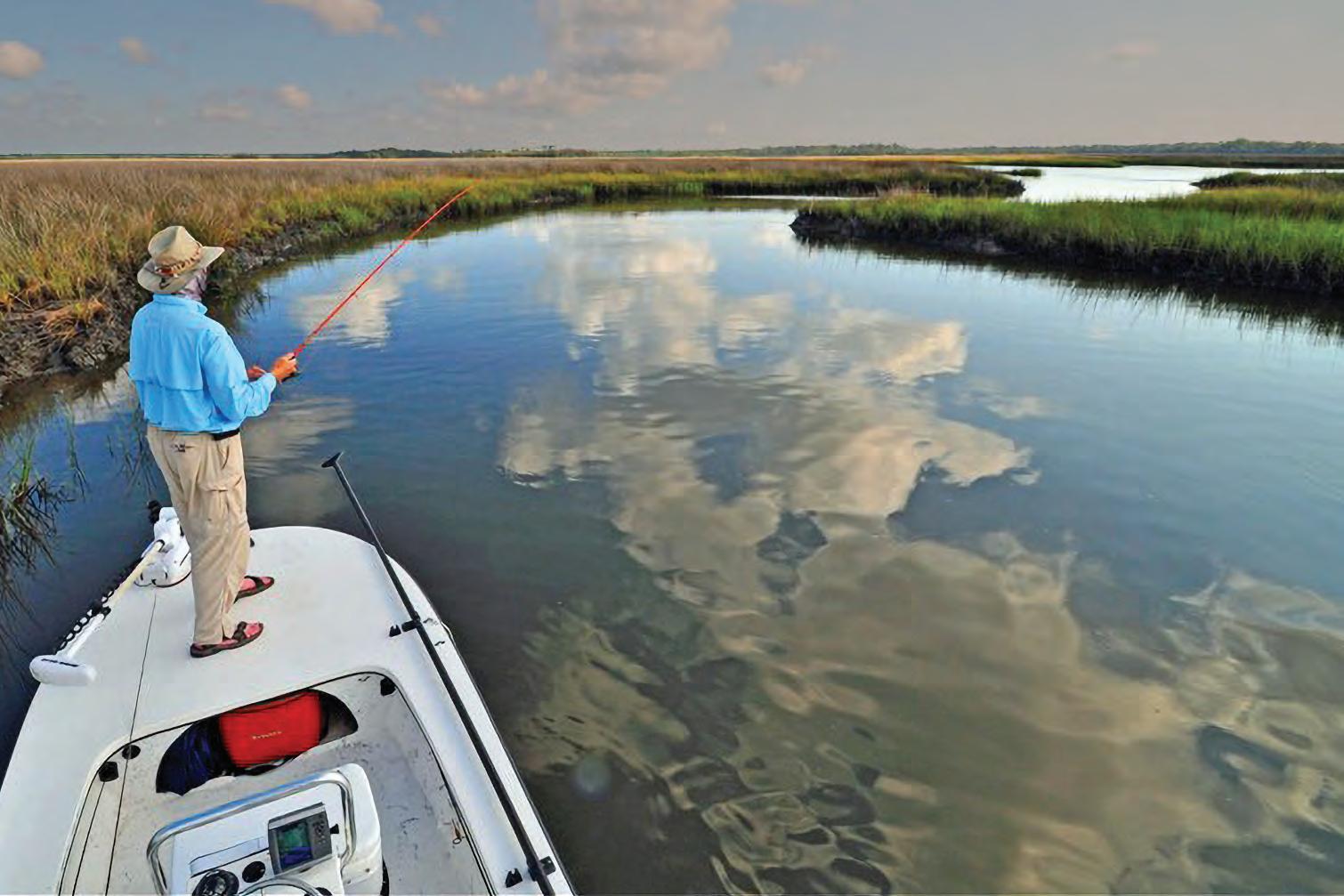
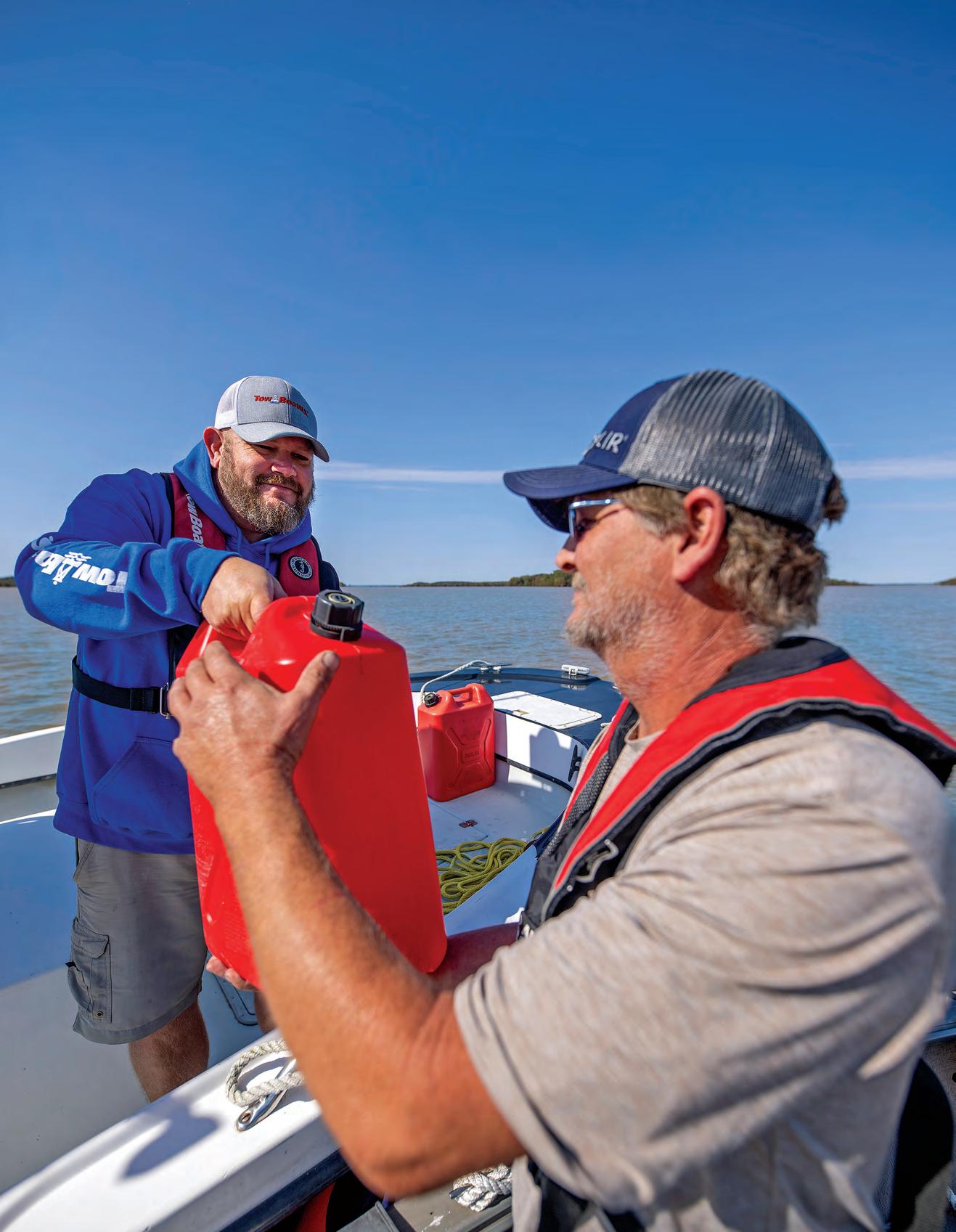
EMPTY TANK?




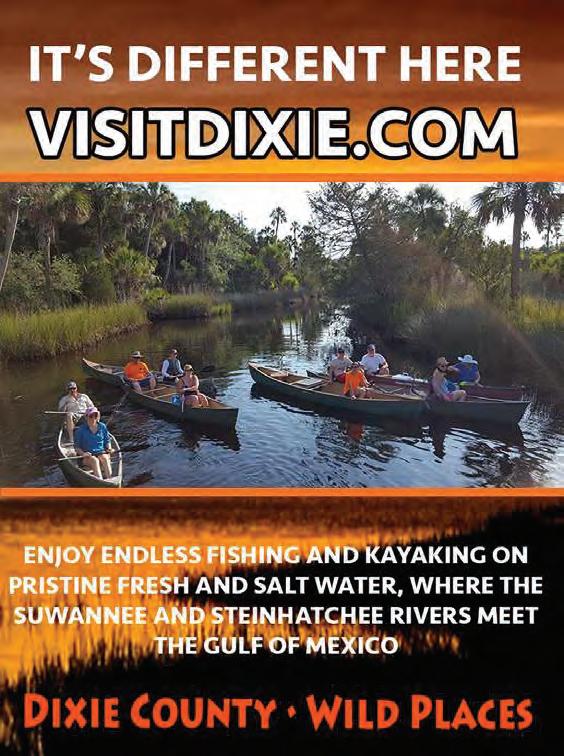



TIPS FROM A PRO
FISHING A BIG WORM
hile there are many ways to target bass, one method consistently stands out— shing with a big worm.

Worm shing may not be the ashiest technique, but it allows you to present your bait from a distance and work it slowly—ideal for tempting big, cautious females that ignore faster presentations.
One of my go-to techniques is casting a Texas-rigged stick bait. It’s a common tactic, but many anglers waste time casting at dead water. I focus on high-percentage areas, such as isolated patches of grass or lily pads. Even when the sh aren’t visible, they o en hold tight to this type of cover. Similar results can be achieved by targeting wood or rock. Make multiple slow retrieves through these areas for best results.
I prefer a larger 6” stick bait in dark colors like black and blue tip. For weights, 1/16 or 1/8 oz keeps the presentation subtle and natural. I recommend 17–20 lb uorocarbon, which o ers strength without sacri cing stealth—braid can be too intrusive here.
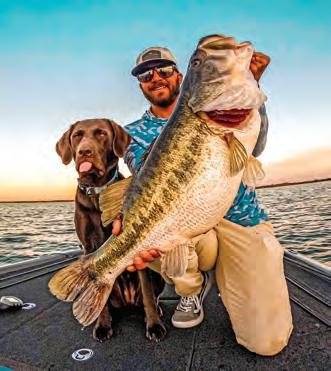
To cover more water and locate active sh, I switch to a big speed worm. While it’s a popular technique in Florida, where I predominantly sh, it works well across the country. !e bait’s vibration drives bass crazy, making it an excellent search tool. Once I nd sh with this method, I slow down and ne-tune my approach with other techniques. For stained water, I like darker colors like junebug; for clearer water, I use green pumpkin with ake. Weight ranges from 1/8 to 1/4 oz depending on depth and wind. Fluorocarbon in the 15–17 lb range is ideal here too.
Another e ective presentation is the wacky rig. It’s a more subtle approach and shines in pressured waters. Like with the Texas rig, I cast this bait weightless to isolated cover. I use lighter line and a spinning setup—typically 10–15 lb leader—adjusting based on cover density. In dirty water, I stick to dark colors; in clearer water, I go with more natural tones.
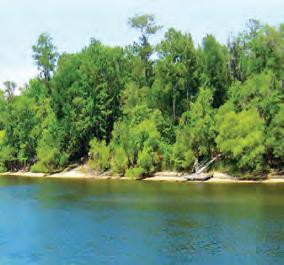



Flipping a worm is another technique I use, especially when there’s a lot of heavy cover. While not as stealthy, ipping allows you to place the bait precisely where other rigs can’t reach. I use large Senko-style baits, braided line, and heavier weights (3/8 to 3/4 oz) to penetrate thick vegetation. It’s perfect for pads, long banks, and heavy wood or grass. !e key is to sh slowly and thoroughly, putting your bait where others haven’t.
Rod and reel setups vary slightly depending on the technique. For most casting and ipping styles, I like a longer rod—around 7’6”— with medium-heavy to heavy action. !e 13 Fishing Omen Series has a few ideal models. I pair these with a high-speed baitcasting reel like the Concept A 7.5:1, which helps pull sh out of thick cover quickly.
For the wacky rig, I downsize to a 7’3” medium-heavy spinning rod. It o ers enough backbone to move sh but also provides the sensitivity and exibility needed when using lighter line. A spinning reel with a smooth drag is crucial. I recommend the 13 Fishing Axum, which o ers the control and power necessary for nesse shing around cover.
!ese worm shing techniques consistently produce. Whether you’re casting to isolated cover, ipping into thick vegetation, or working a speed worm through open water, there’s a big bass out there waiting to bite. I’m excited to put these methods to work—and hope they help you land some giants too.
Tyler Woolcott is a professional tournament angler and guide. Check out his website at www.tylerwoolcott shing.com.
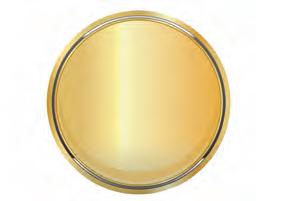

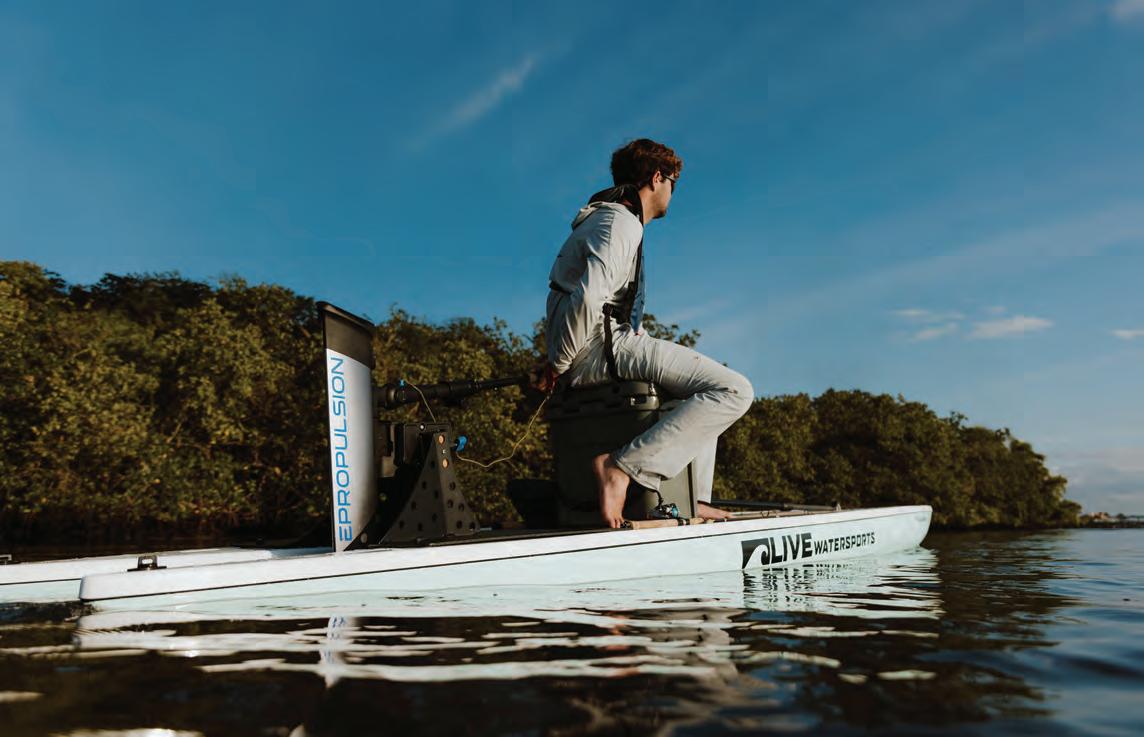





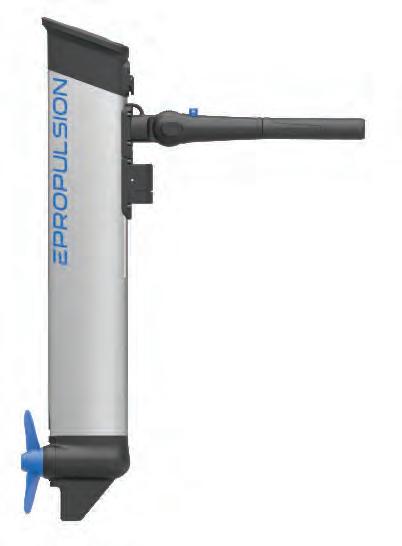
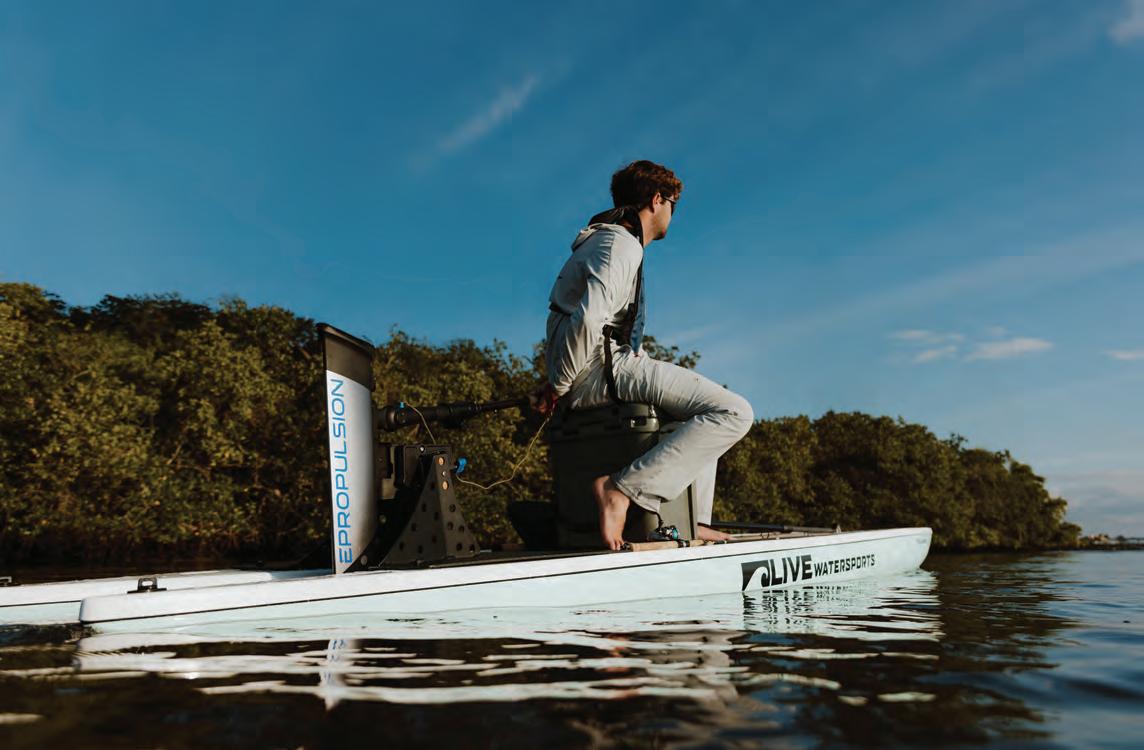




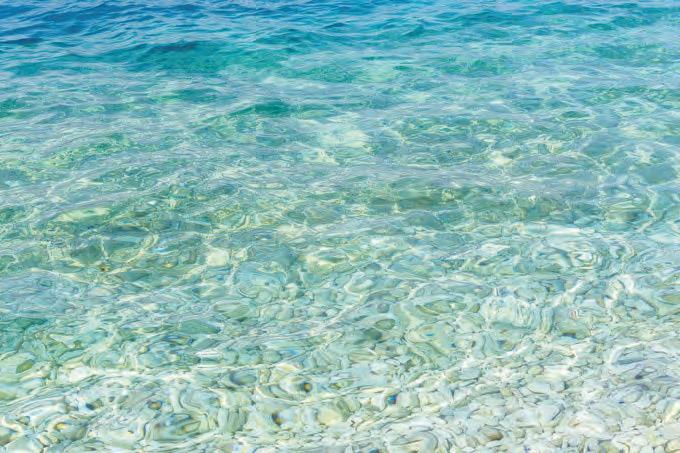







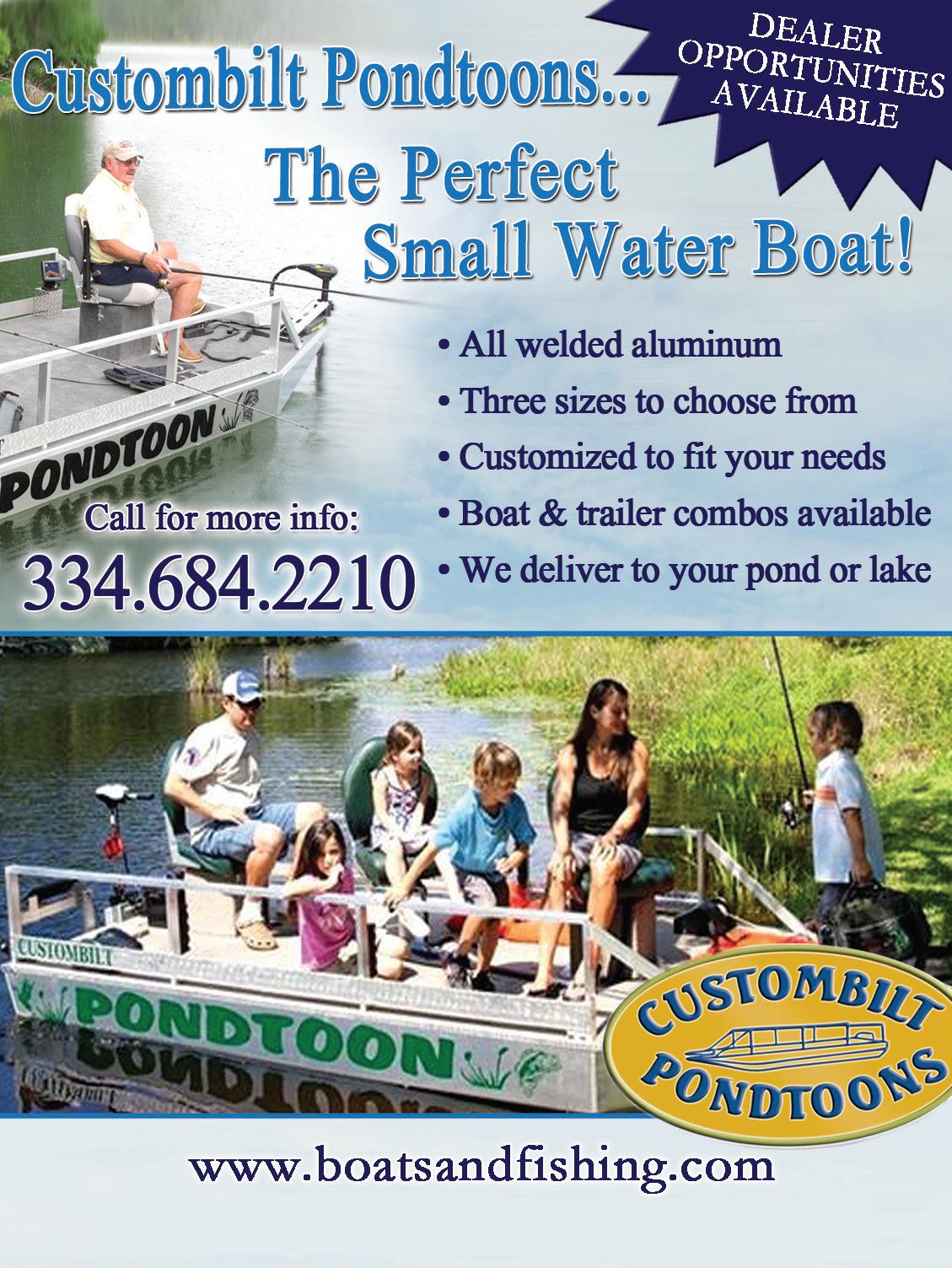
WHY BUY NEW WHEN YOU CAN RENEW?!?

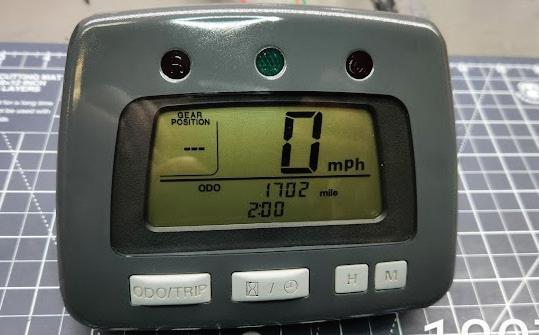
STATE RECORD FISH TITLE BROKEN THREE TIMES THIS YEAR!
For the third time in less than a year, Georgia has a new freshwater !sh state record spotted sun!sh!
Josh Forsythe of Homerville, GA (Clinch County) landed the newest record catch of 0 lb, 13 oz on May 5 from the Suwannee River. is almost 9-inch catch beats the previous state record tie of 0 lb, 12 oz, according to the Georgia Department of Natural Resources’ Wildlife Resources Division (WRD).
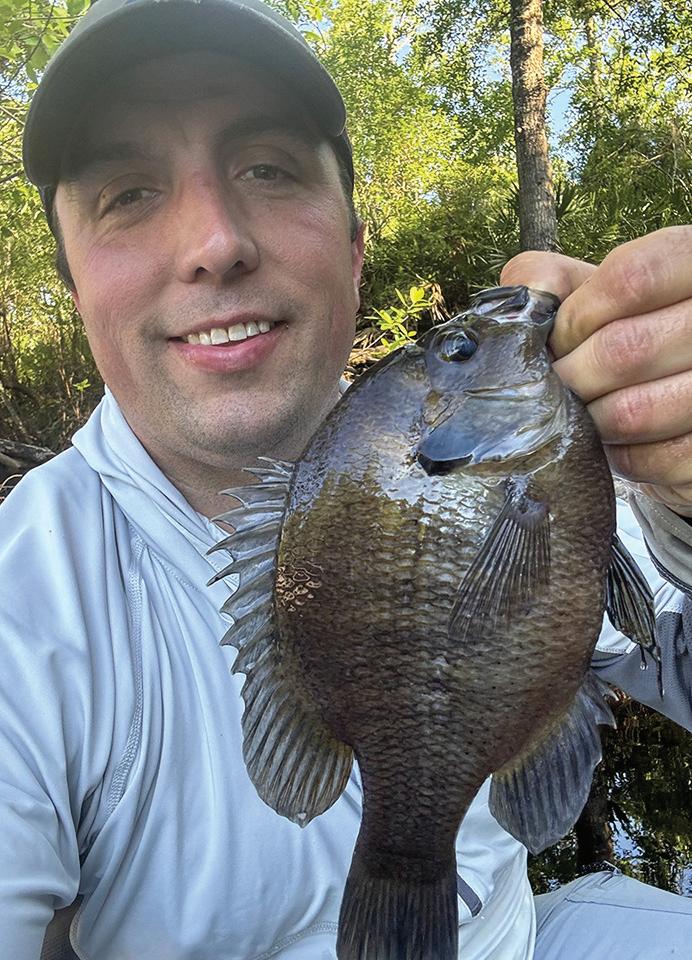
“My 5-year-old daughter and I were !shing for bream on one of my favorite rivers, the Suwannee, when I caught this spotted sun!sh,” said Forsythe. “I have been !shing this river for more than 15 years and it is one of my favorite places to !sh for good-sized bream, especially spotted sun!sh. I recommend waiting until river levels are below 4-foot and using top water bugs to catch giants, but a beetle spin or even a cricket or a worm on a cork will work.”
Spotted sun!sh are found in the Ocmulgee, Oconee, Altamaha, Ogeechee, Ochlockonee, Suwannee, St. Mary’s, Satilla and Savannah River basins. When angling for them, WRD recommends using worms, crickets, small spinners, ies and popping bugs.
“Maybe hearing about that state record tie for spotted sun!sh !red up some folks to land a new record – and we love to see it,” says Scott Robinson, WRD Chief of Fisheries. “Are you the next state record holder? Georgia has the best variety of angling opportunities across the state so Let’s Go Fish Georgia!”
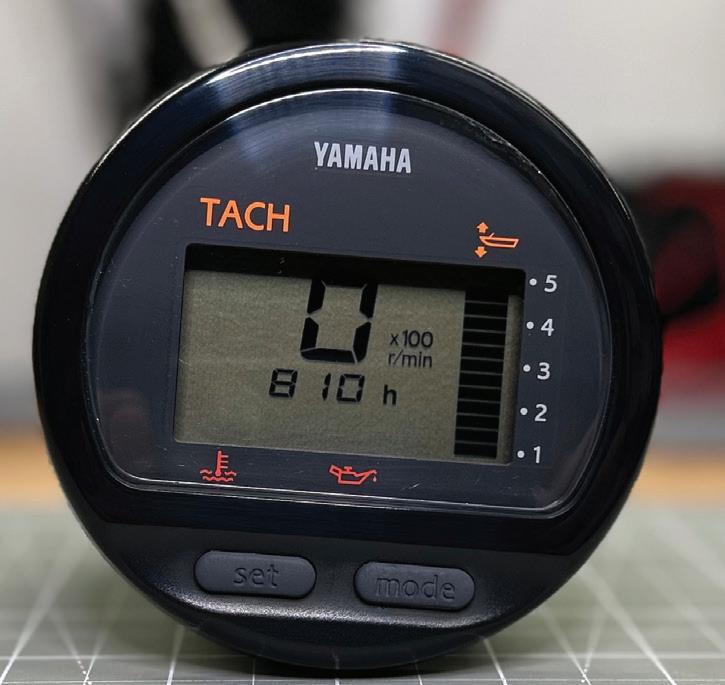

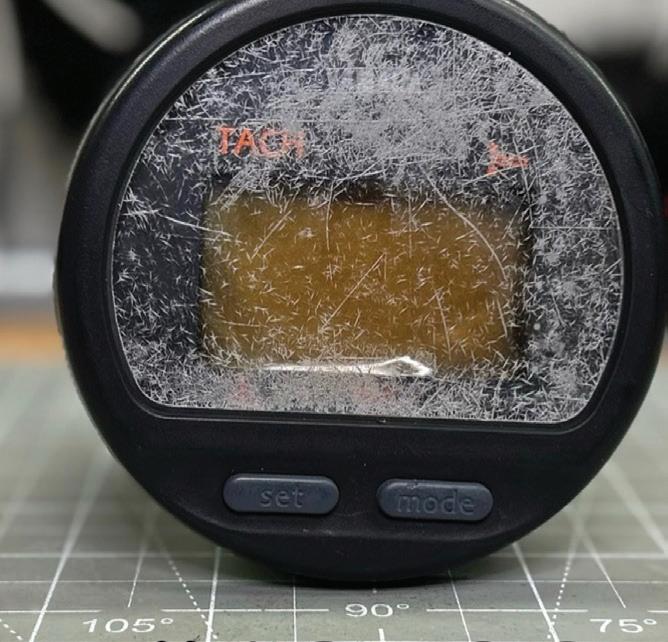


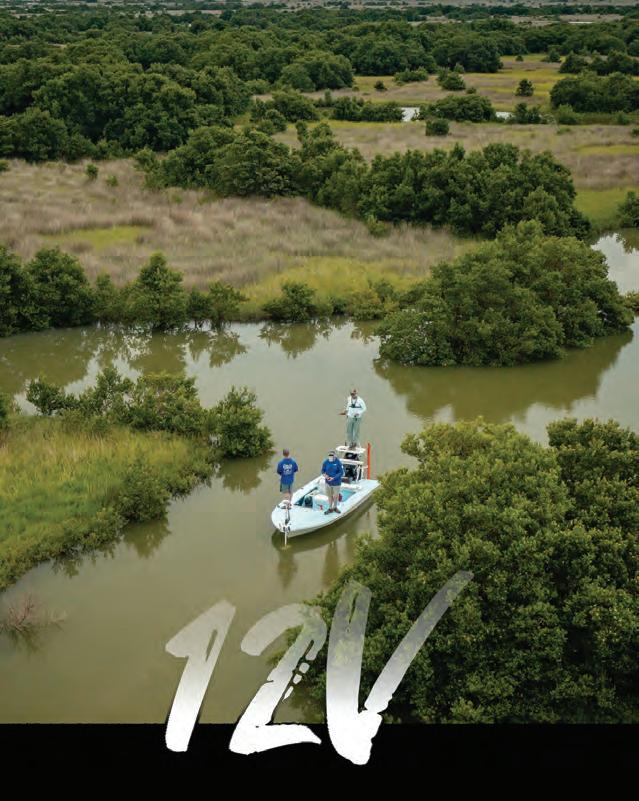
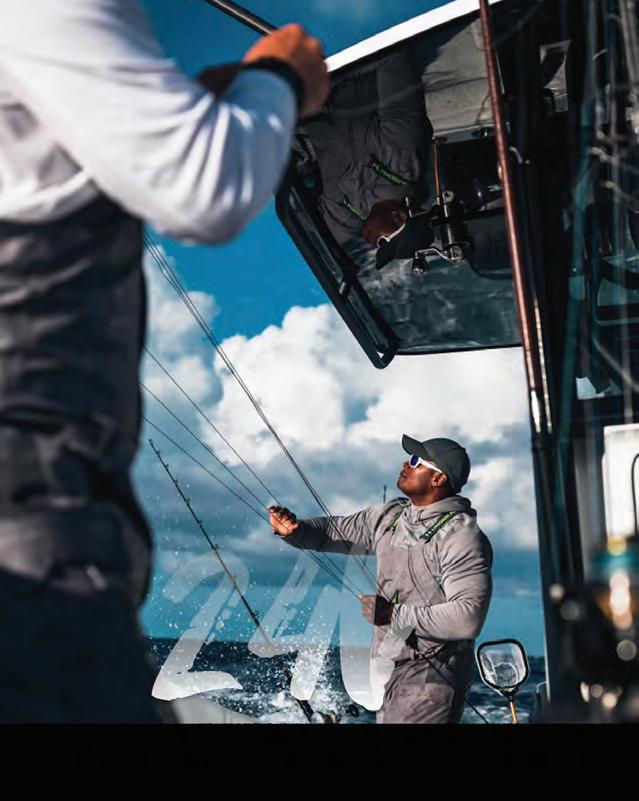



NC CERTIFIES NEW VERMILION SNAPPER RECORD
North Carolina‘s Department of Environmental Quality’s Division of Marine Fisheries recently established a new state record for Vermilion Snapper (Rhomboplites aurorubens).
Colby Shaw of Newport caught the 7-pound, 4-ounce sh o Morehead City on April 18, 2025. !e previous state record was 6-pounds, 9-ounces landed out of Ocean Isle in 2009.
Shaw was shing in his own vessel, o shore south of Beaufort Inlet when the sh struck his cut bait. Shaw made quick work of reeling in his state record sh, landing it using his Shimano rod and reel with 65-pound braid.
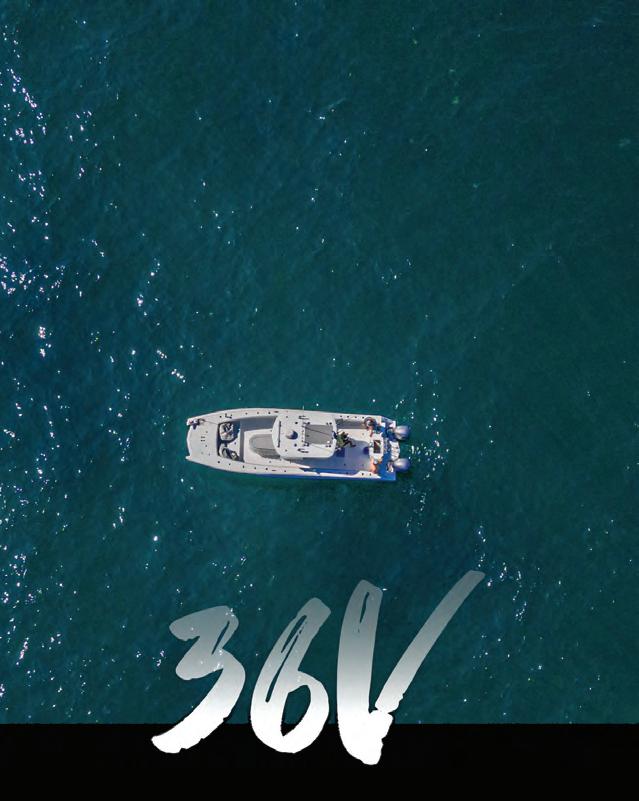



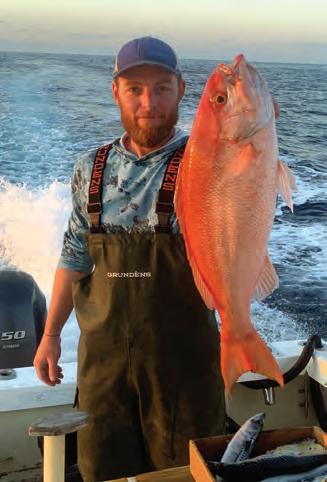
Shaw’s sh measured 23.5-inches fork
to the fork in the tail) and had a 17-inch
sheries sta at the Morehead City Headquarters
!e
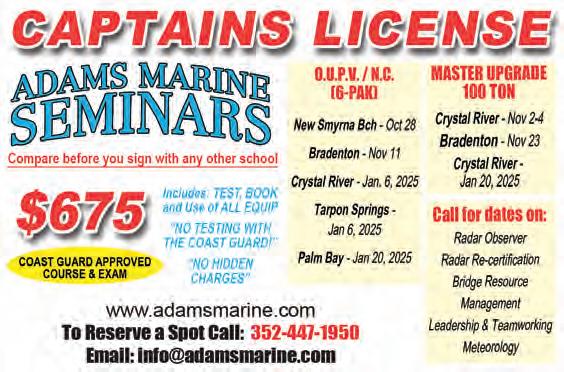



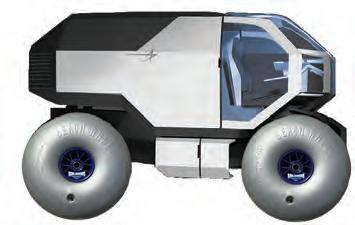

Division of Marine Fisheries.
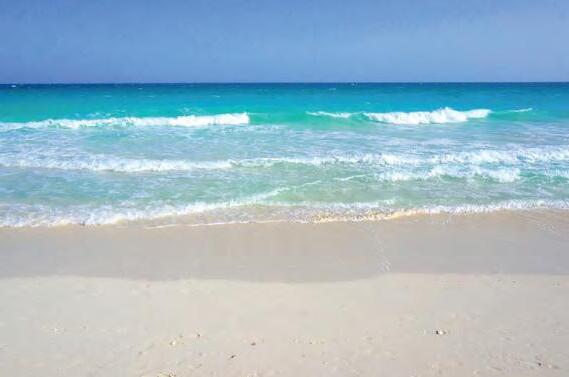








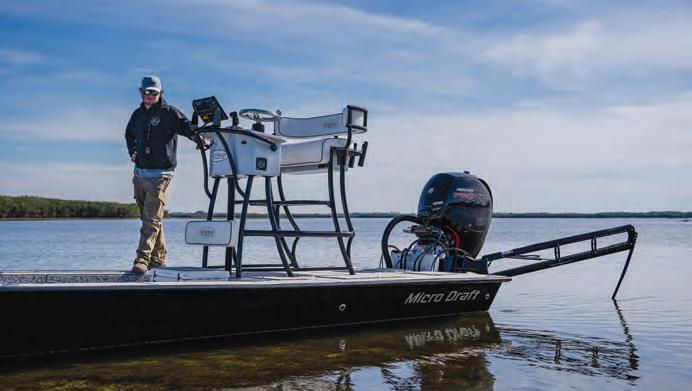




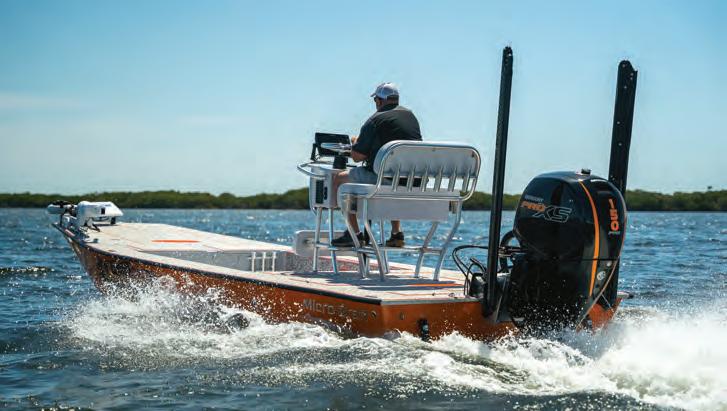

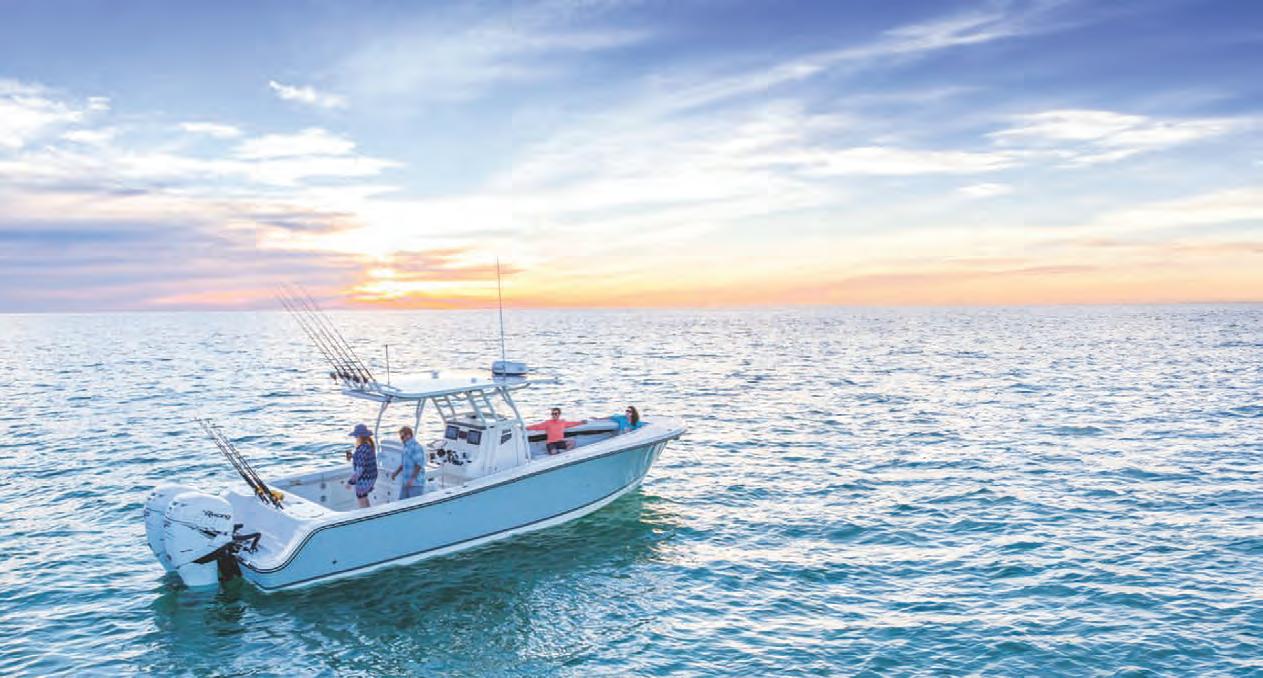


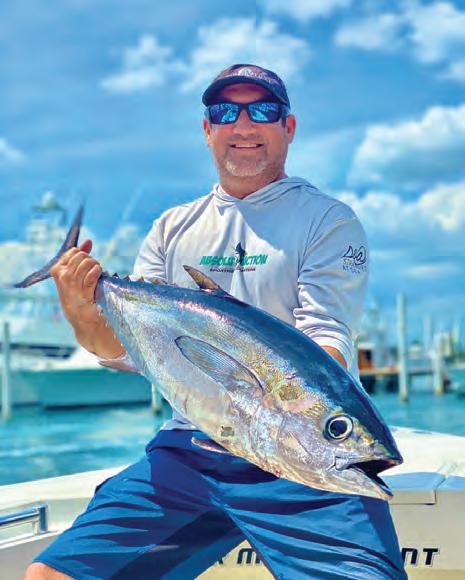



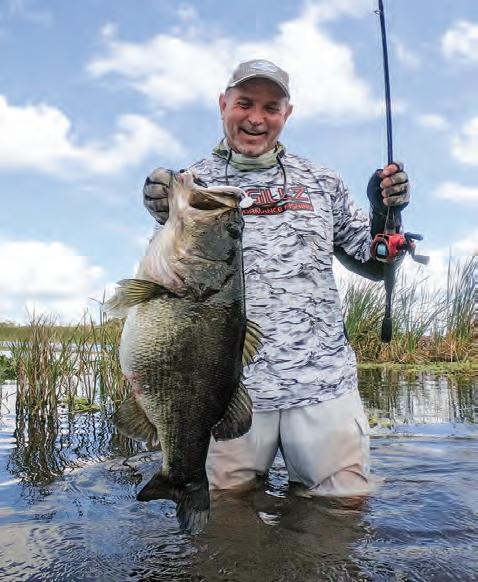

Bill Dance Signature Lakes O er Impactful Improvements to Tennessee’s Fishing Waters
By David Haggard & Heather Lose
Representatives from Tennessee Wildlife Resources Agency, Tennessee Department of Tourist Development, and Tennessee State Parks celebrate the ribbon cutting of the Bill Dance Signature Lakes project at the Bassmaster Classic in Knoxville on March 25, along with the project’s namesake. Photo Courtesy of the Tennessee Department of Tourist Development:



